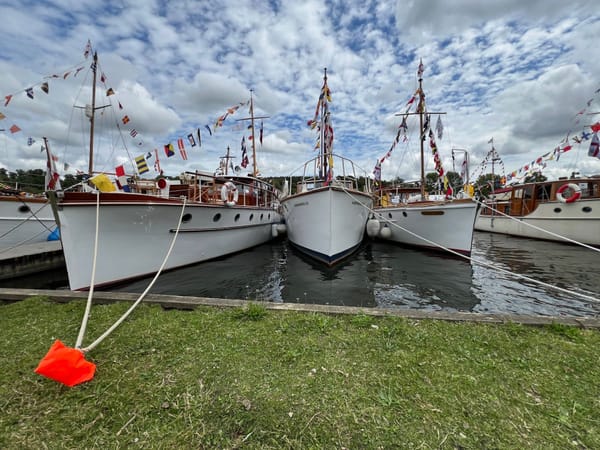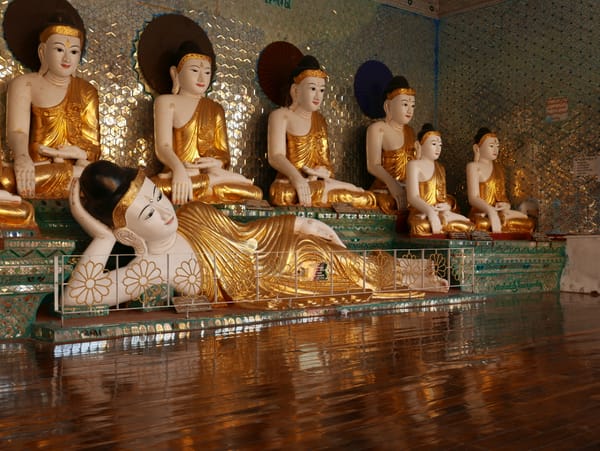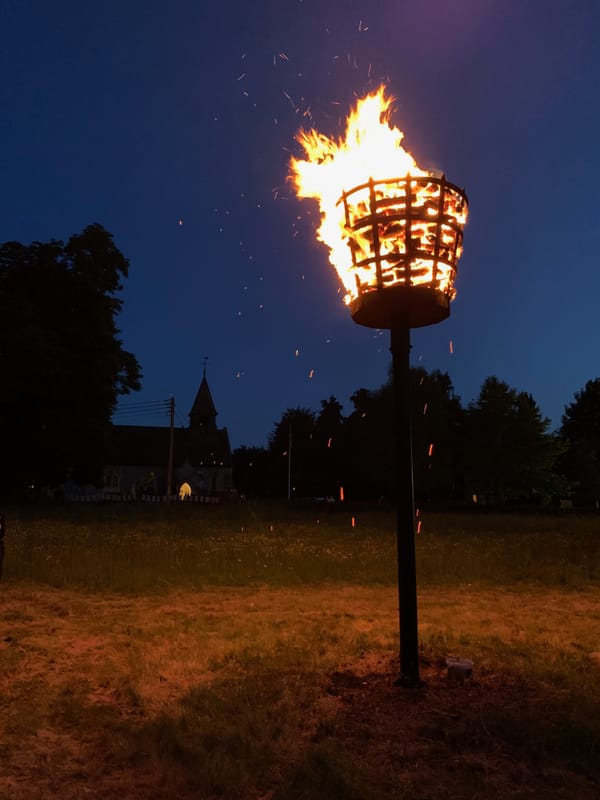Bali — Sahadewa Barong and Kris Dance, Bali, Indonesia
Traditional theatre in Bali
September 2015
One morning in Bali, I had an early start morning, and I was on the road with my taxi driver before 9 am, so I could get to the Sahadewa Barong and Kris Dance show, which started at 9:30 am.
Entry to the Sahadewa Barong And Kris Dance cost 100,000 Indonesian Rupiah (£5 GBP; $7.50 US), and yes, it was worth it.
The show was a traditional Balinese theatre production of good versus evil. The show was for tourists, but it was very interesting and provided some insight into Balinese culture. The show reminded me of the traditional British Christmas pantomime and even had some rude bits involving a monkey’s tail.
In the play, a mythological animal called a Barong, a lion-like creature and the king of spirits, represents a good spirit, whereas the Rangda is an evil demon queen.
In the overture of the play, a tiger appears, followed by his friend, a monkey. Three masked men appear (making palwine — I think this is a mistranslation in the text describing the show, and they mean palm wine), and the tiger kills a child. This causes the masked men to attack the tiger, which his friend, the monkey, supports. During the fight, the nose of one of the three men is bitten off.
The first act opens with two female dancers and the servants of the evil Rangda appearing. The dancers were looking for the servants of Dewi Kunti, who were on their way to meet the Prime Minister (Patih).
In the second act, it starts to get complicated as one of the dancers turns into a witch and possesses two of the servants to make them angry. The Dewi Kunti servants continue on to meet the Patih, and then they all (including the Patih) return to Dewi Kunti.
Now things get complicated, and if I am honest, I stopped trying to follow what was going on halfway through the second act.
In the third act (according to the leaflet) — Dewi Kunti and her son, Sahadewa, arrive. For some reason, Dewi Kunti had promised her son, Sahadewa, to the evil Rangda (I was wondering at this point when the Barong was going to arrive and whether to not I had missed it). Another (or possibly the same) witch appears and enters Dewi Kunti, which makes her angry, so she orders Patih to take Sahadewa into the forest. This he does as he has now also possessed by a witch, and hence has no concerns about taking this action. In the forest, Patih ties Sahadewa to a tree.
In the fourth act, the God Siwa appears and, unbeknown to Rangda, gives Sahadewa immortality. This means that when Rangda tries to eat Sahadewa, he survives. This causes Rangda to surrender to Sahadewa, who she asks to kill her so that she may go to heaven.
In the fifth act, Kalika, a servant of Rangda, comes to Sahadewa and asks to be killed. However, Sahadewa refuses, and as a result, Kalika turns into a boar and attacks Sahadewa. She is defeated and then becomes a bird, which Sahadewa also defeats. Finally, Kalika turns into Rangda, and Sahadewa still cannot kill her.
At this point of the fifth act, after a period of meditation, Sahadewa turns into Barong, and he is still unable to kill Rangda. The supporters of Barong then appear and help him fight Rangda.
And all of this was accompanied by music.
As I have said above, I followed along with the play until about halfway through the second act. Then it lost me.
The first photograph below shows the Barong, a lion-like creature and the king of spirits.
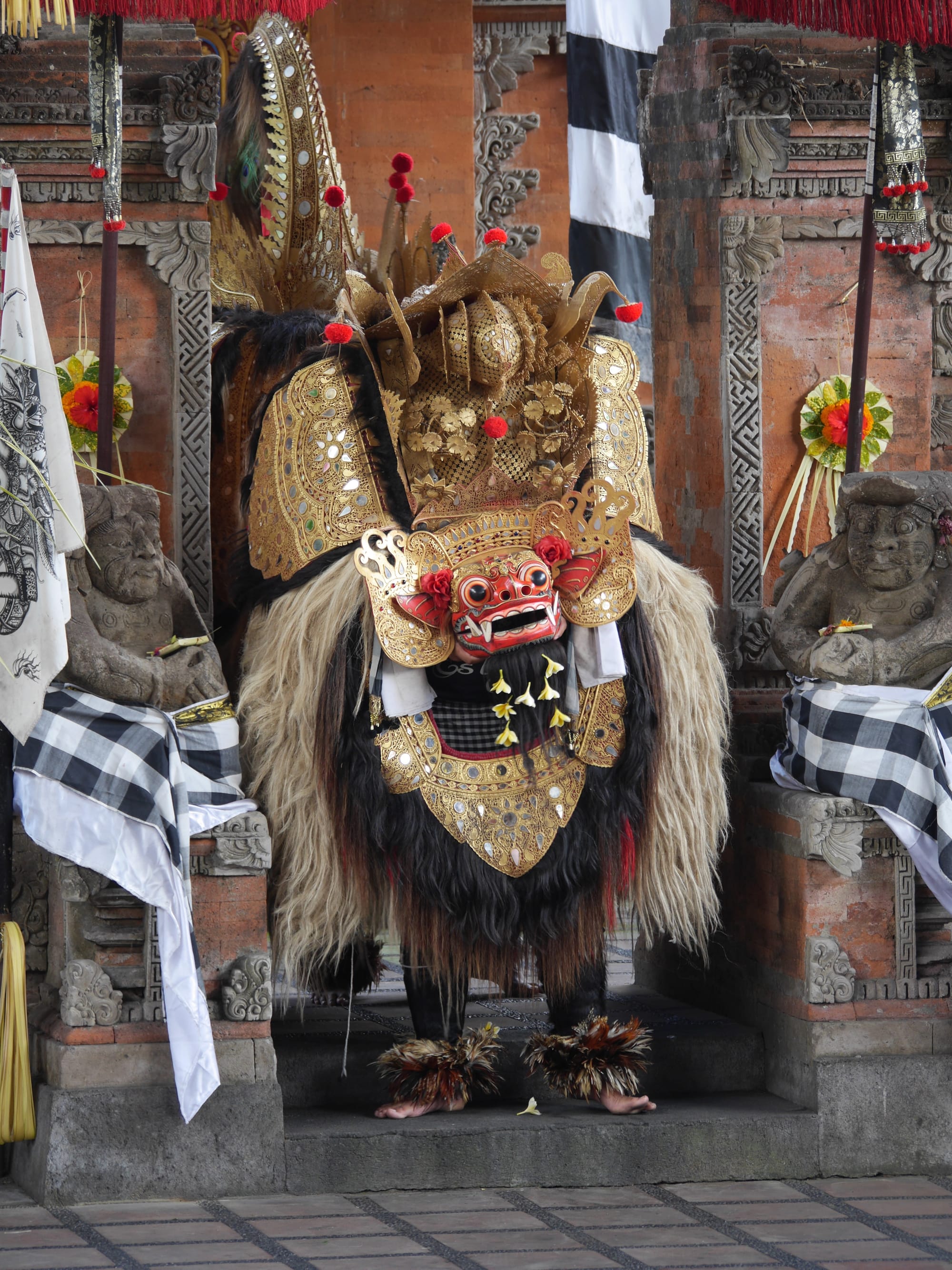
I found the costume of the Barong to be amazing. Such detail and colour.
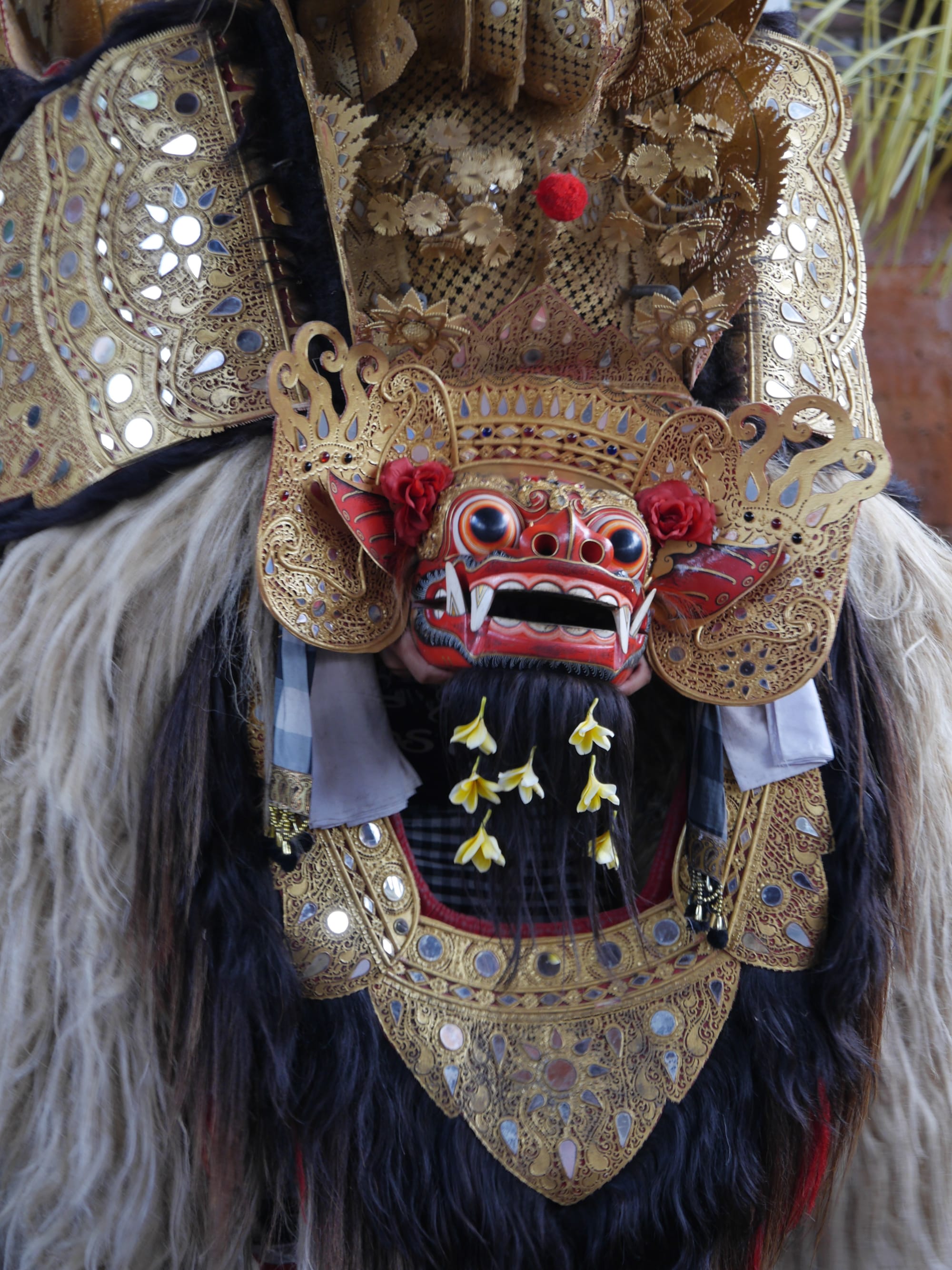
The tiger and the monkey.
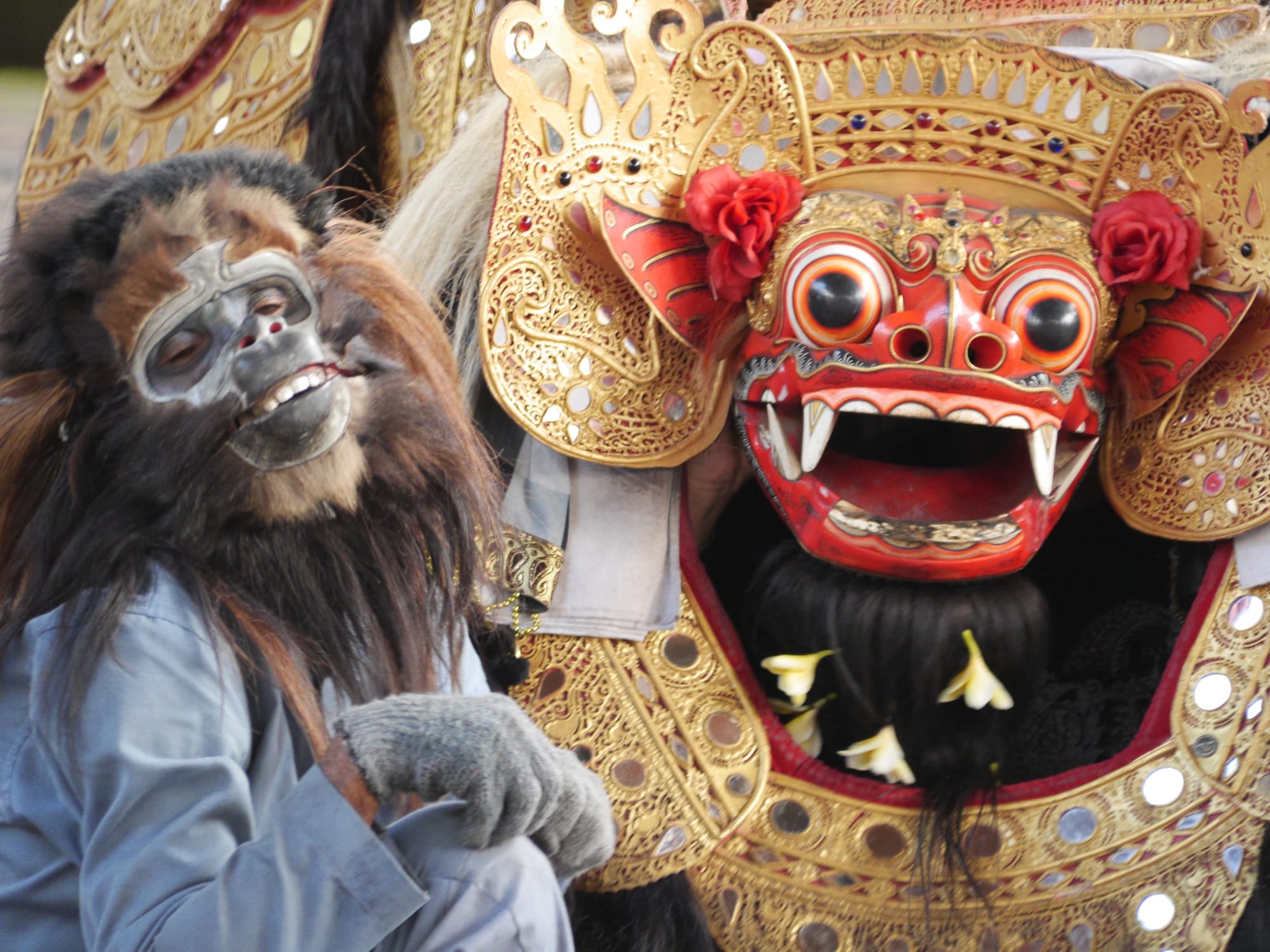
The monkey part was very well played.
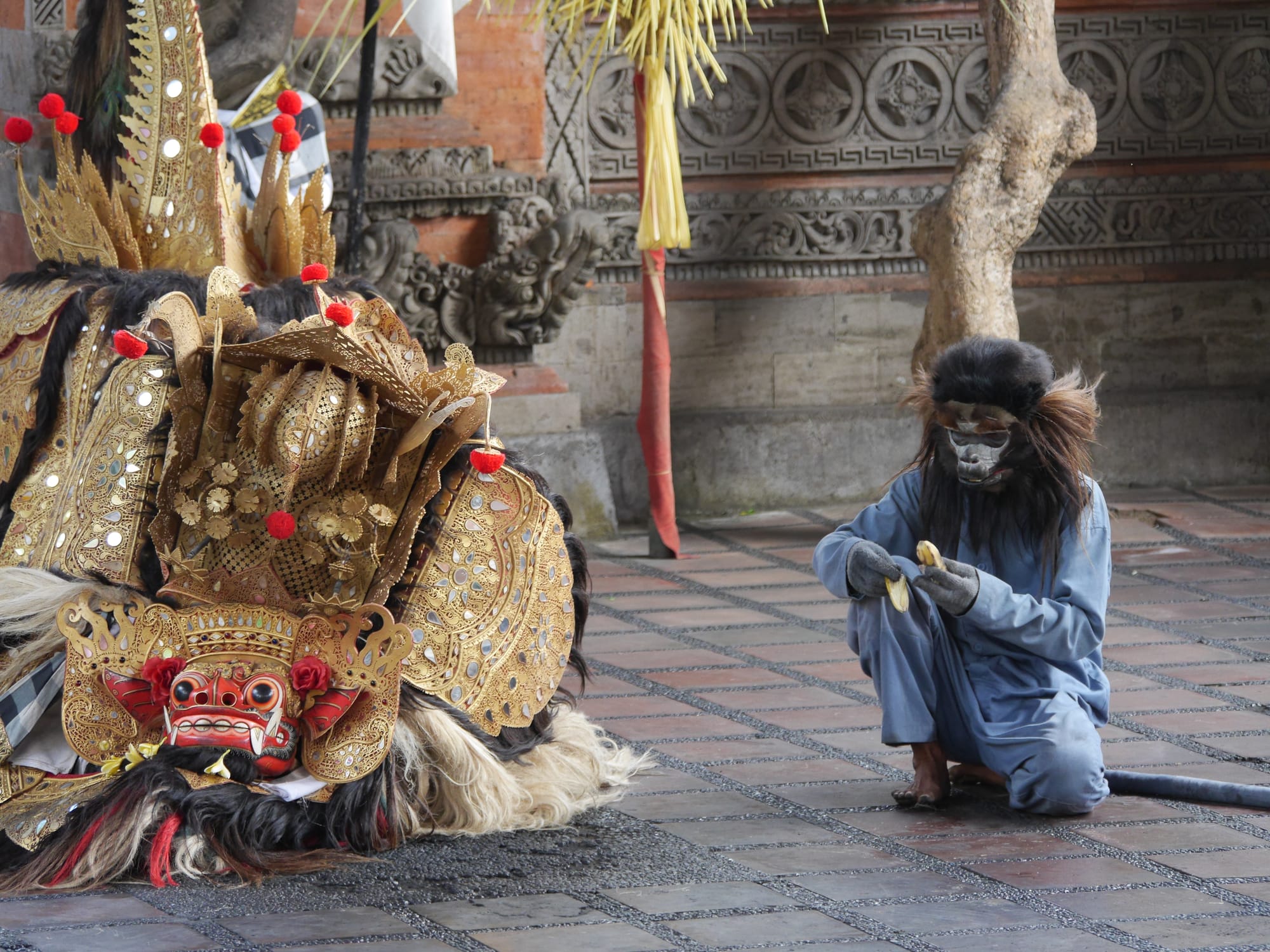
I was unsure who the men in the white masks were — the servants of Dewi Kunti or the men making the palm wine. As they attacked the Barong (which might also be a tiger), I suspect they were the winemakers.
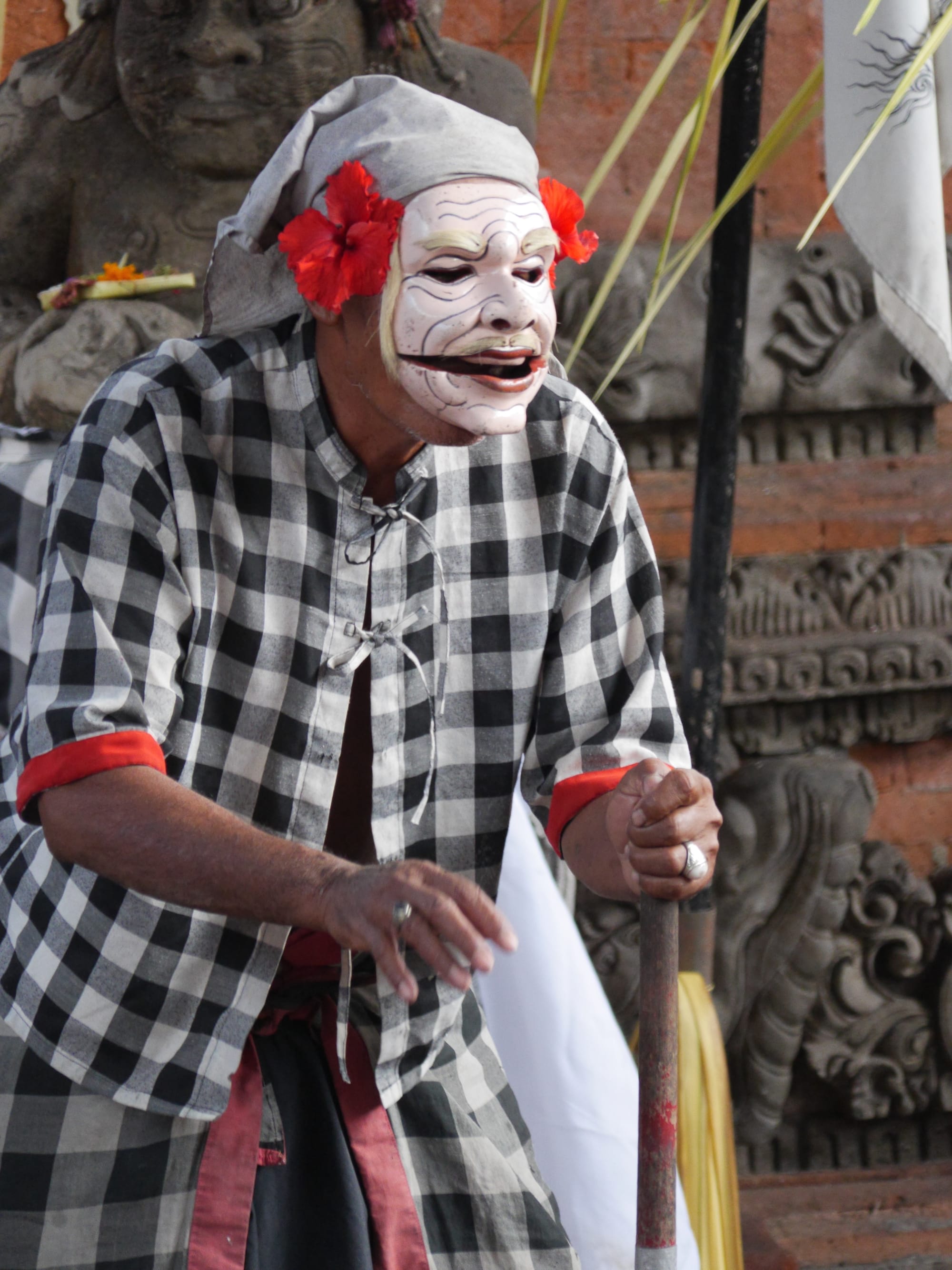
Has the red-faced character below lost his nose?
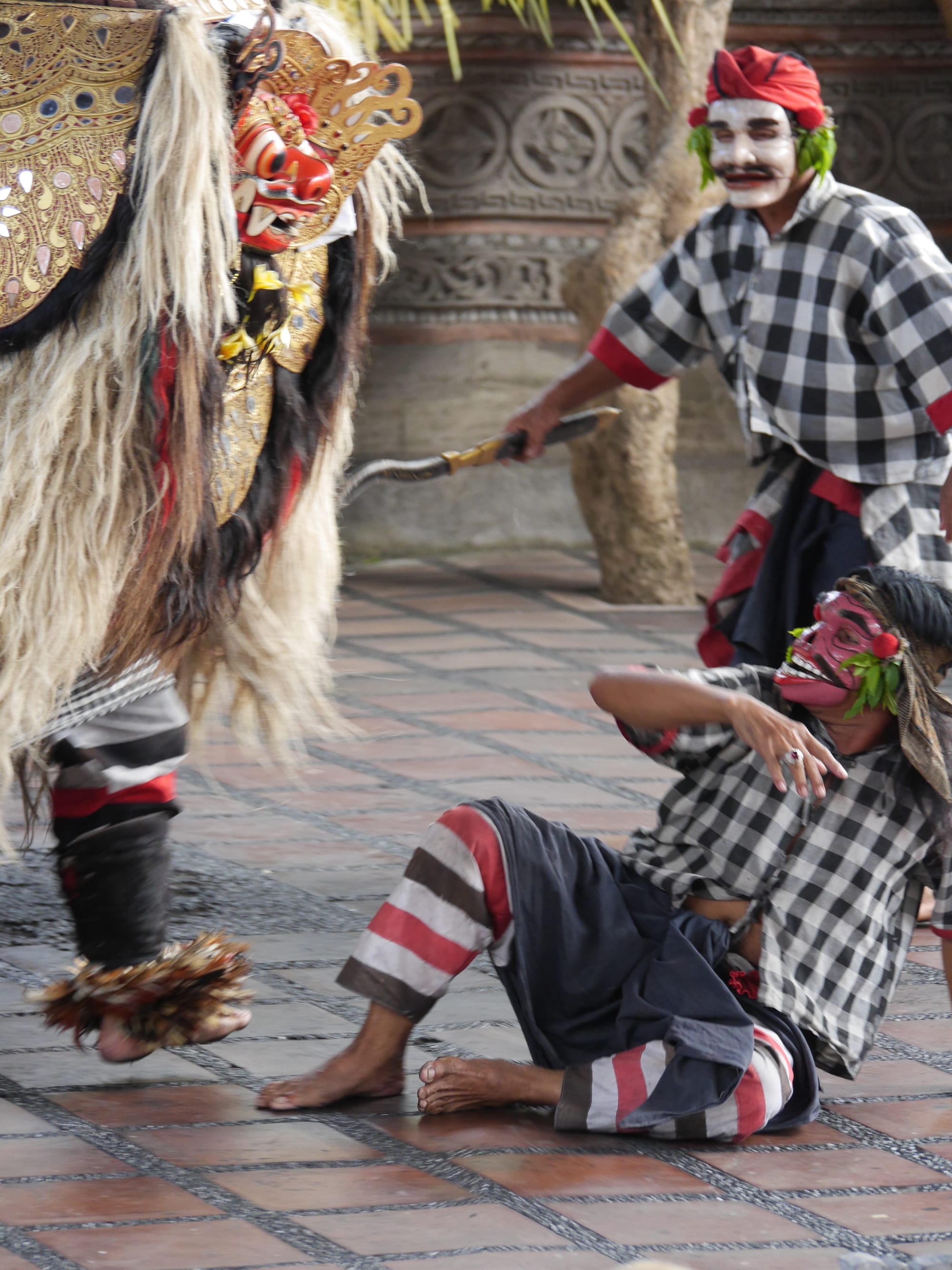
And then, the servants (dancers) of Rangda appear.
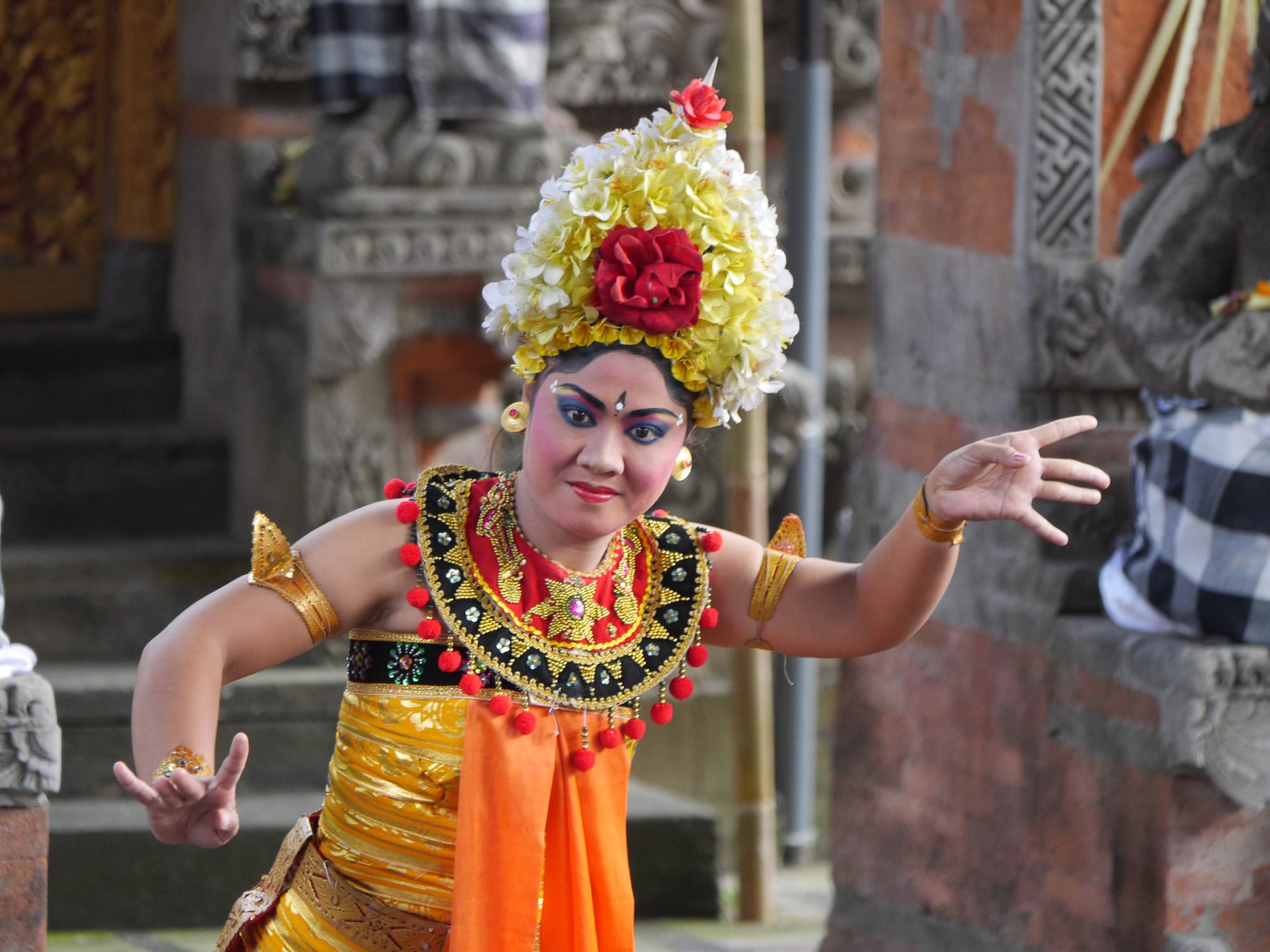
Again, fantastic costumes.
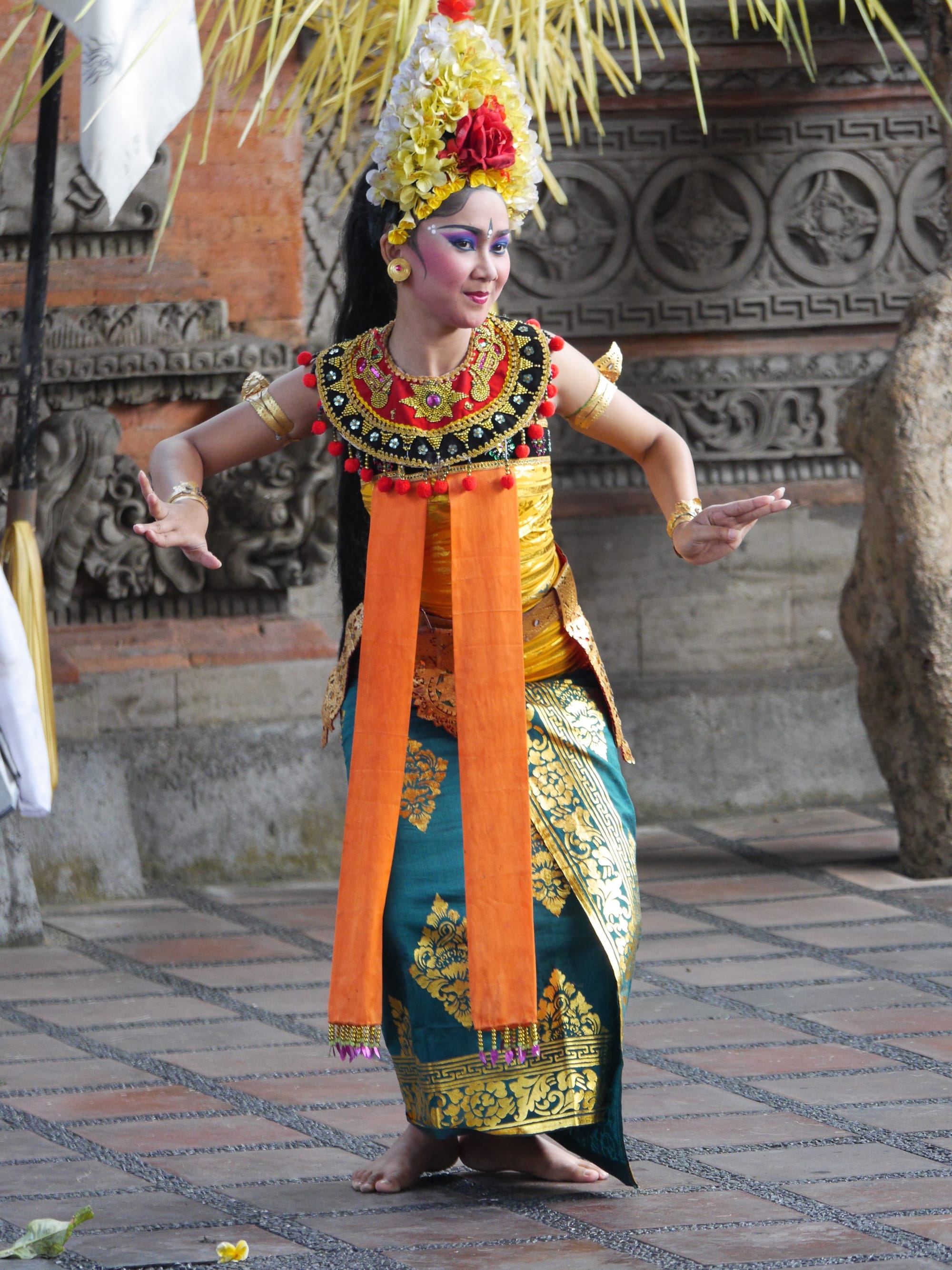
And I guess these guys are the servants of Dewi Kunti on their way to meet the Prime Minister (Patih).
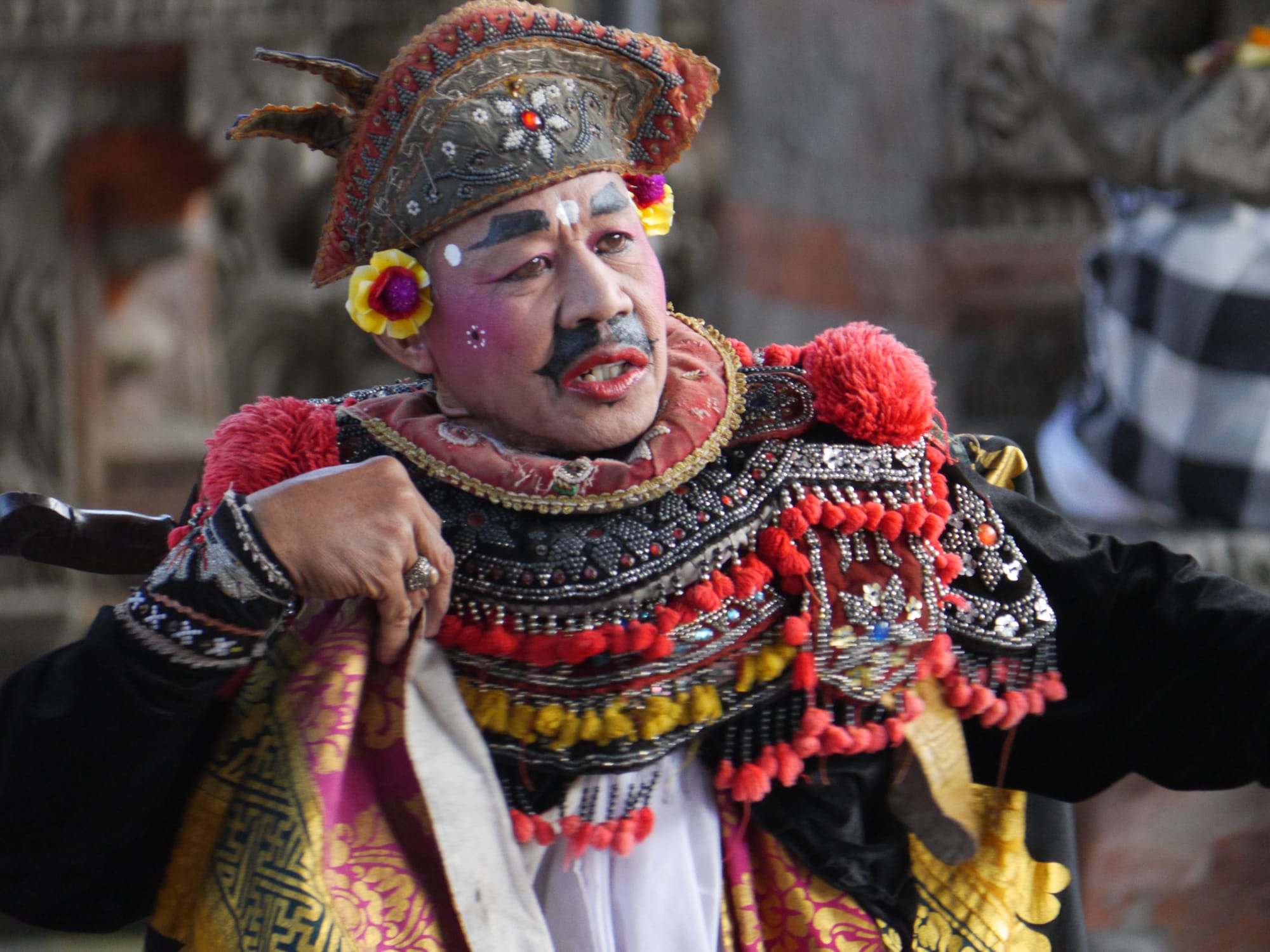
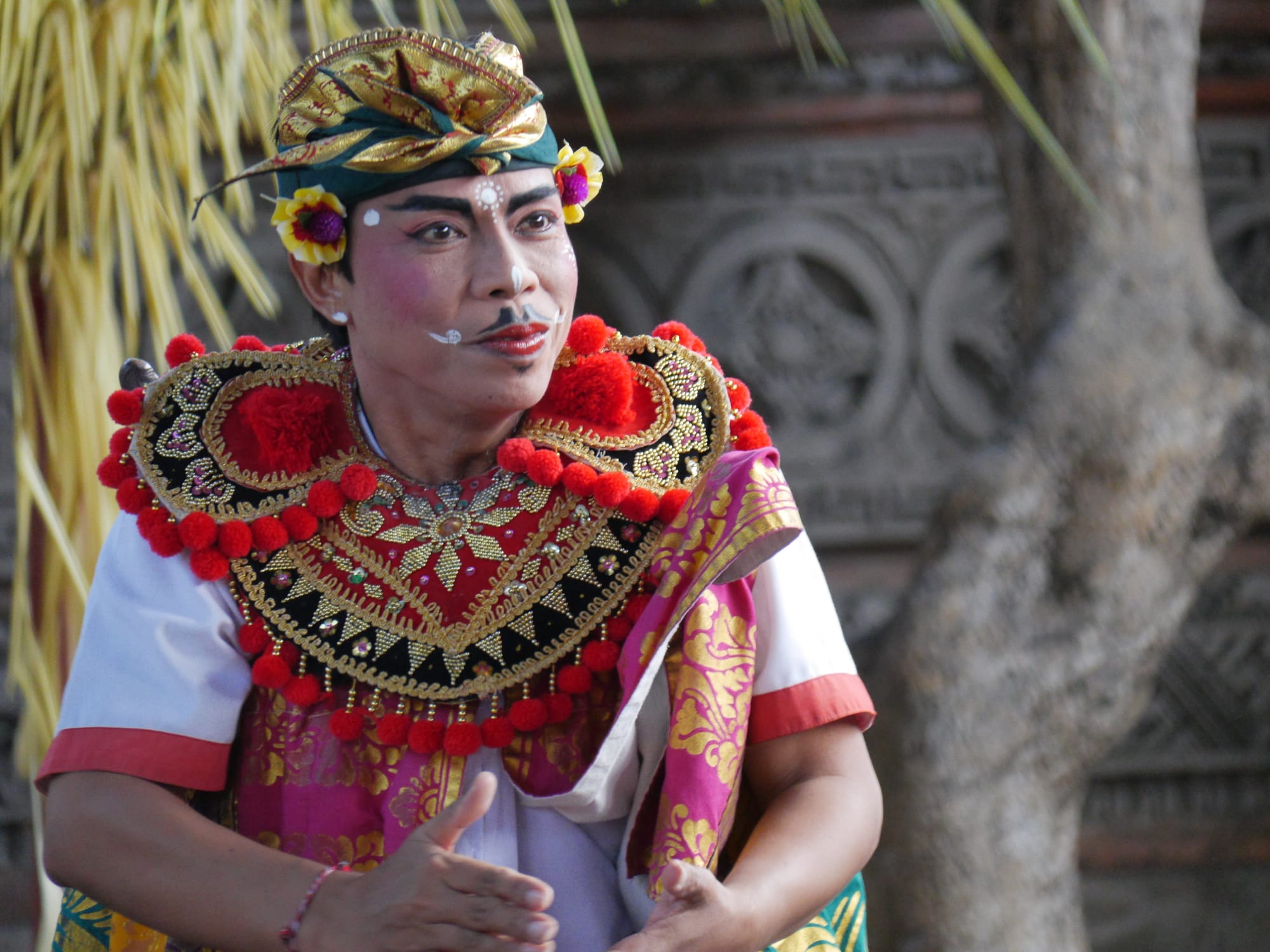
And so, the Sahadewa Barong and Kris Dance performance continued with the arrival of the Rangda, an evil demon queen (the thing with teeth) that can be seen below sneaking up on one of the servants of Dewi Kunti.
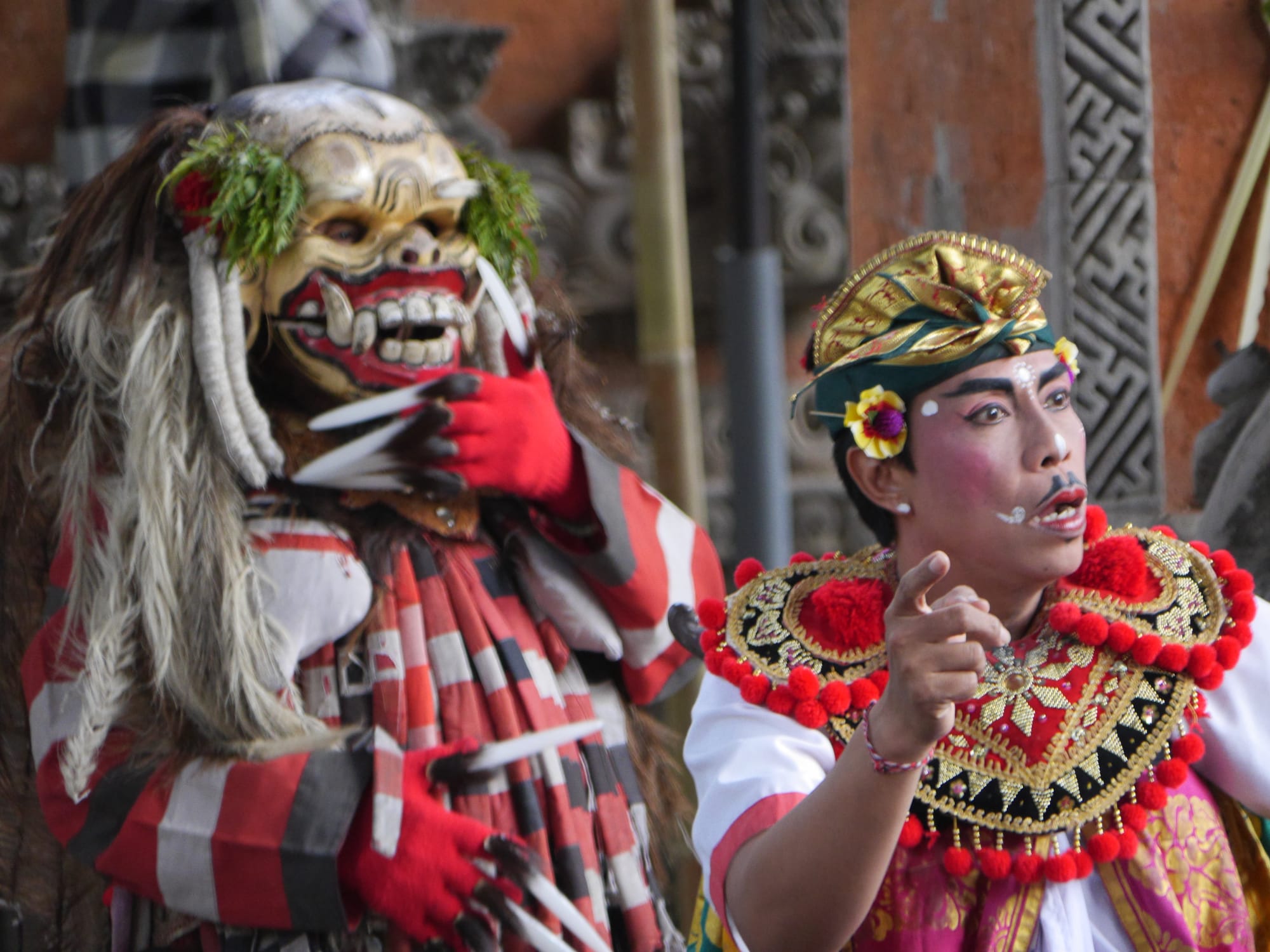
Now, I am unsure where the character below fits into the story. He might be Patih (the Prime Minister). But again, stunning costume.
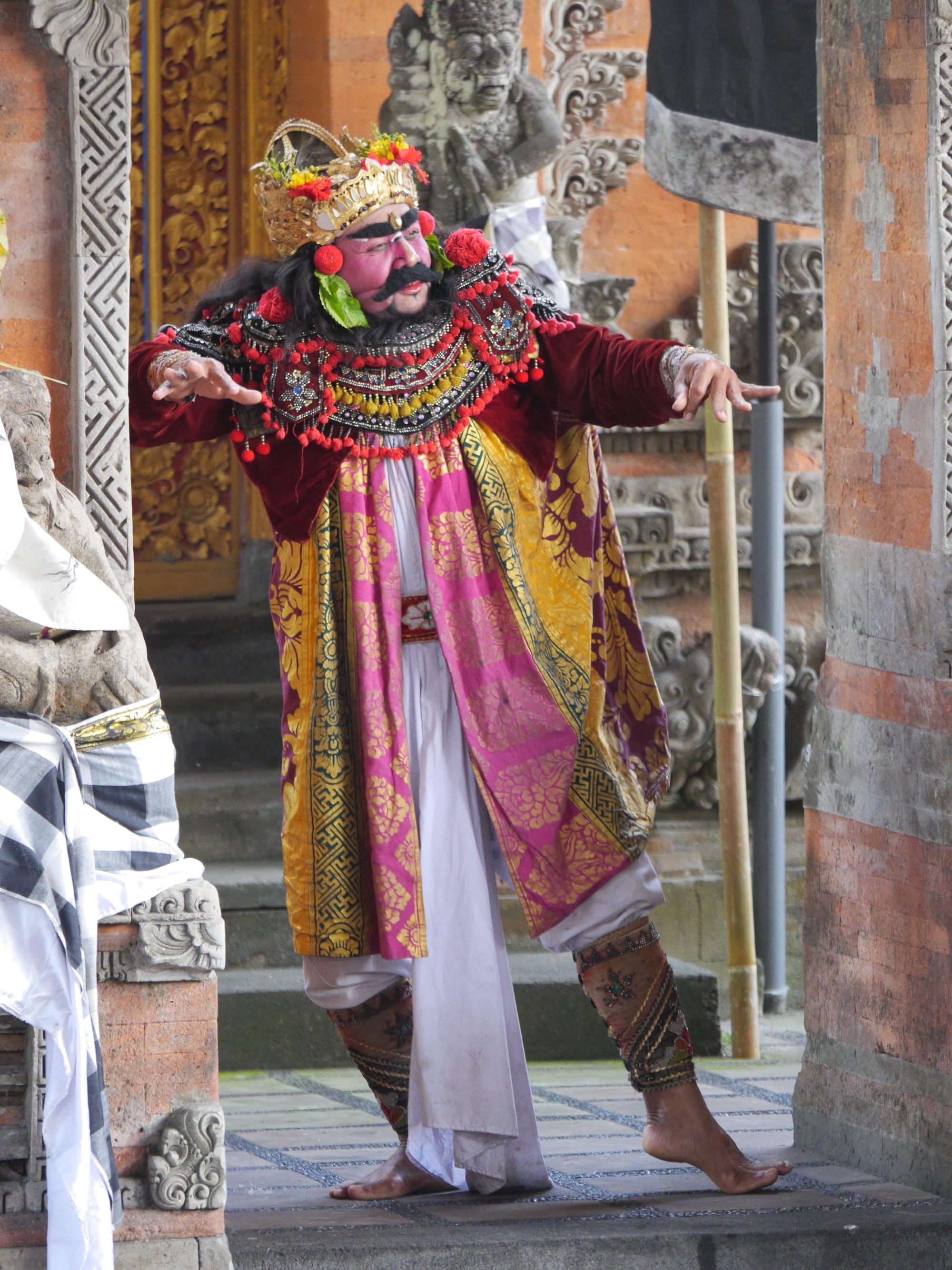
By now, I had lost the plot of what was happening on stage, as there seemed to be more characters around than mentioned in the explanation leaflet.
It could be that the person entering the stage in the photo below is Dewi Kunti.
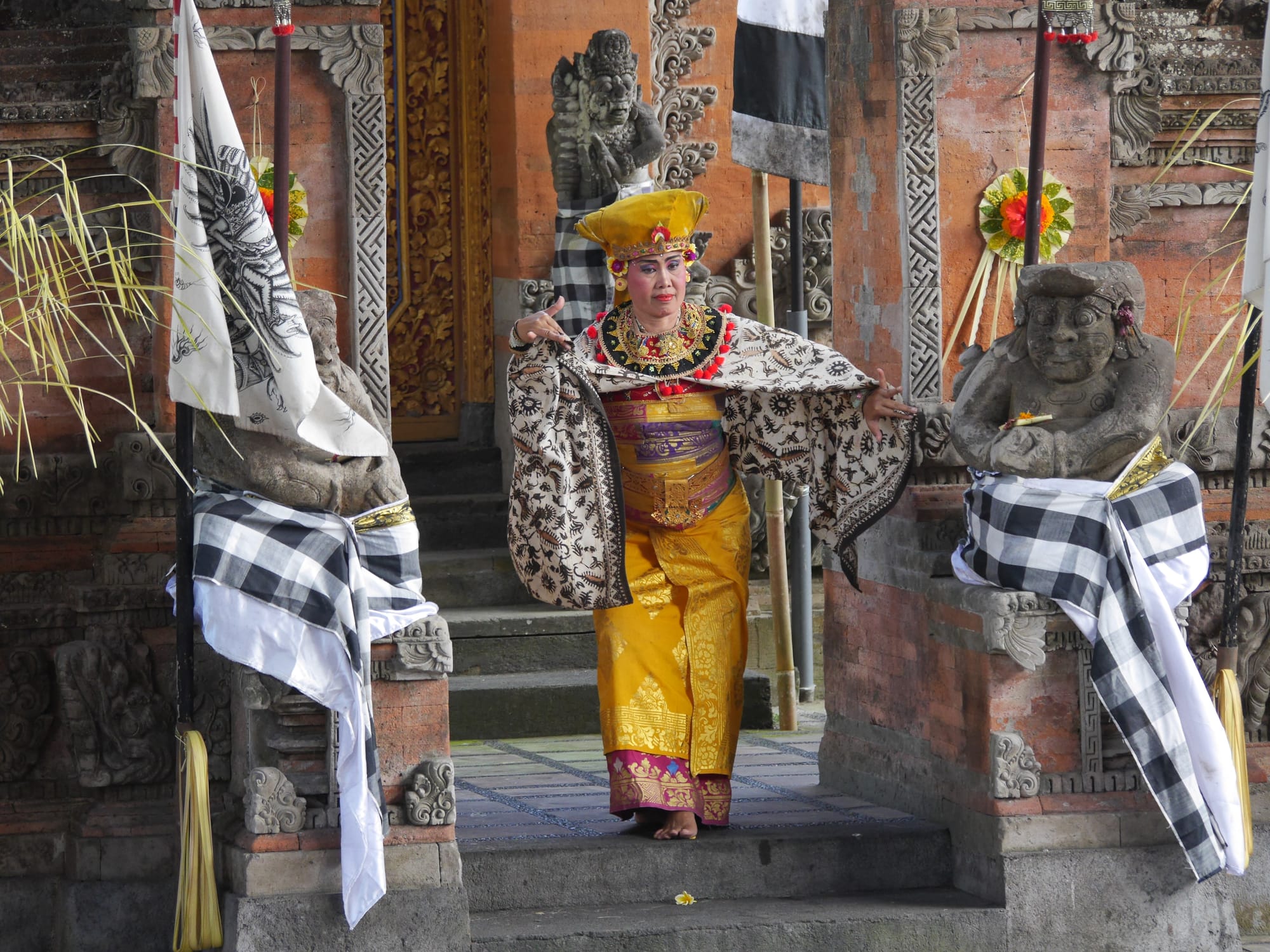
And the person below is Dewi Kunti (standing with their back to the camera) and their son, Sahadewa (kneeling). I think the kneeling character is Sahadewa as they later end up tied to a tree, and the leaflet said that Sahadewa ends up tied to a tree. This was doubly confusing because, at the time I was watching, I thought the kneeling character was female.
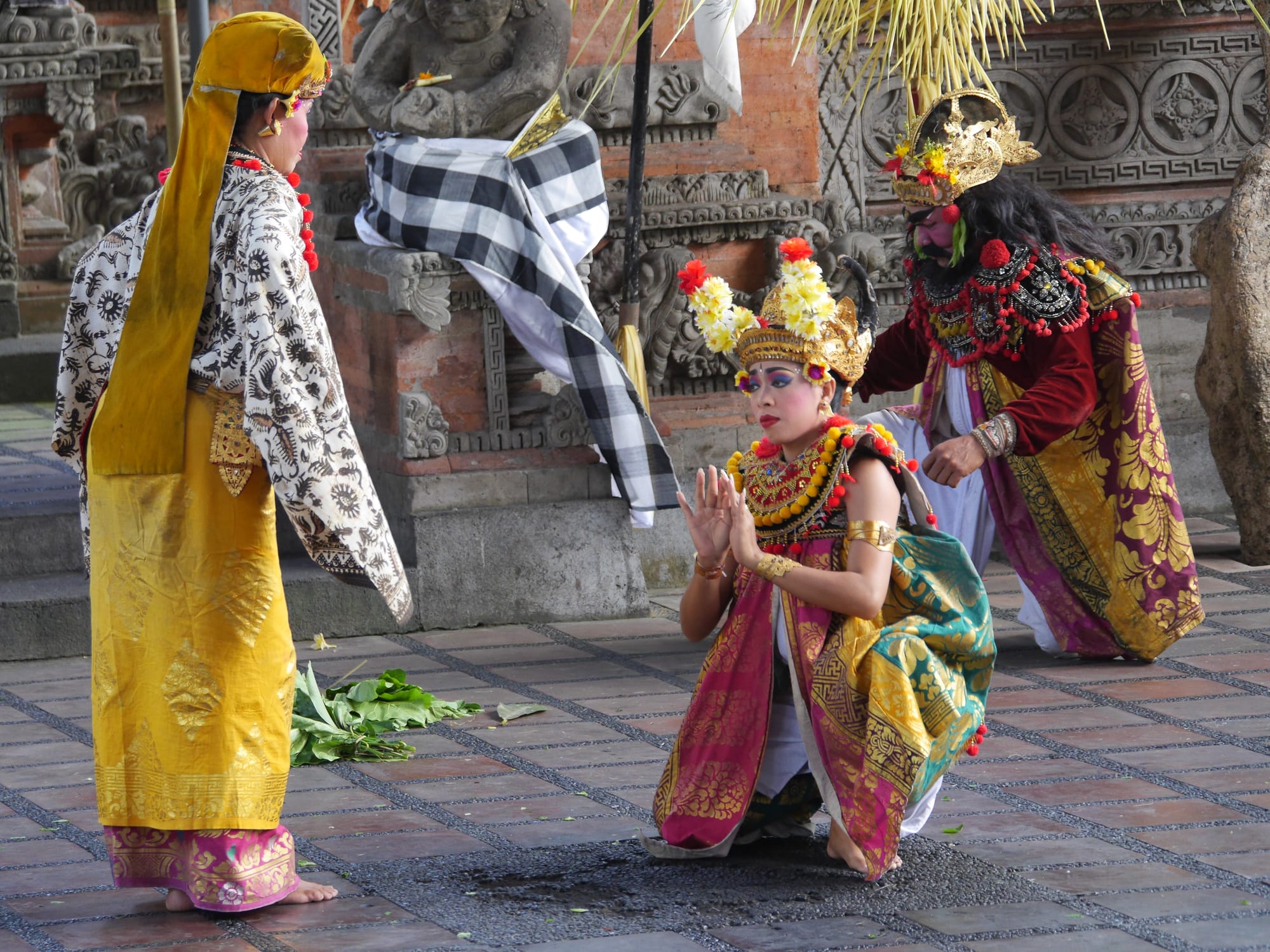
The costumes and make-up were amazing.
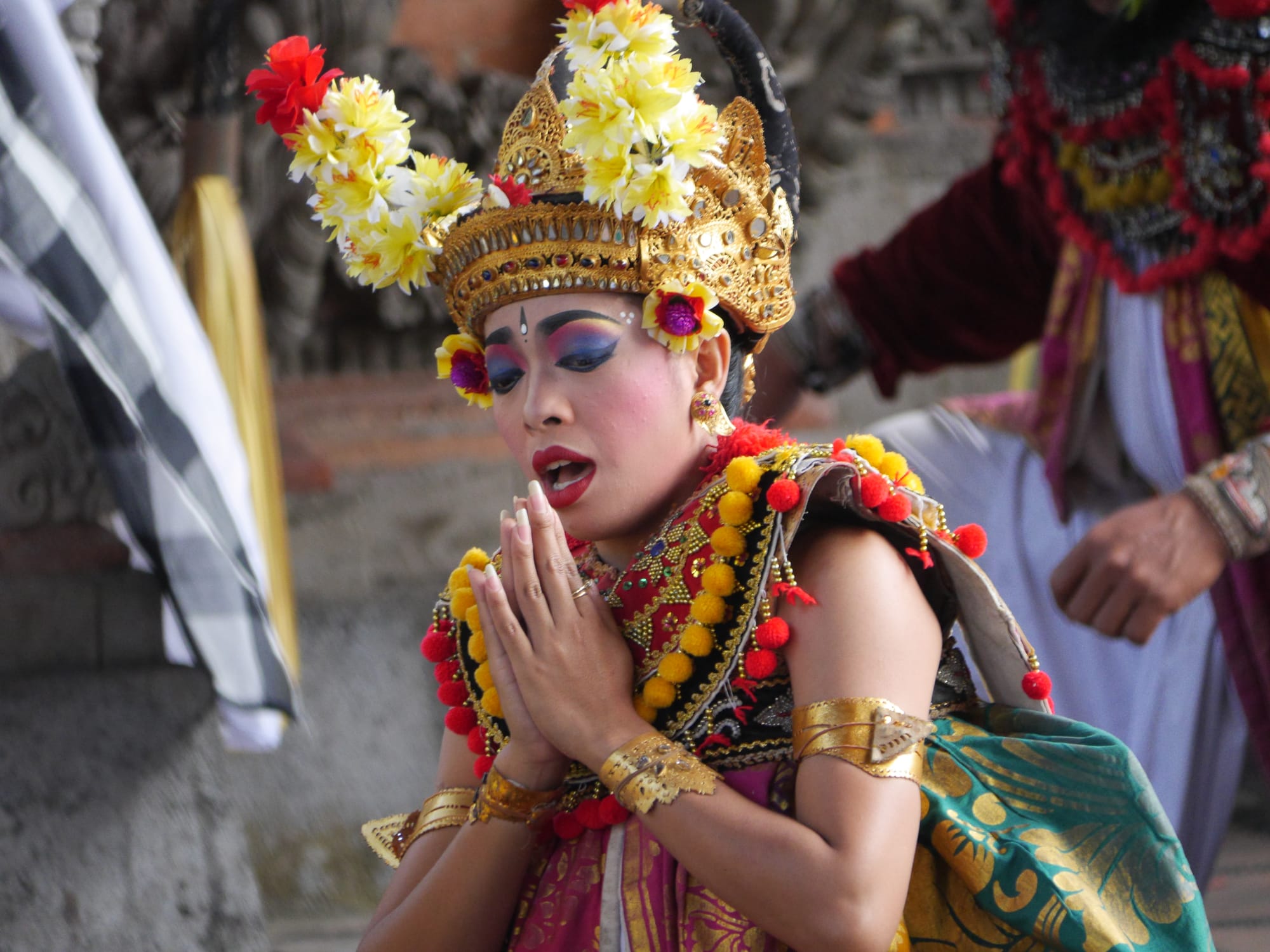
I know the photograph below is of Rangda, the evil demon queen. I did find the breasts a bit comical.
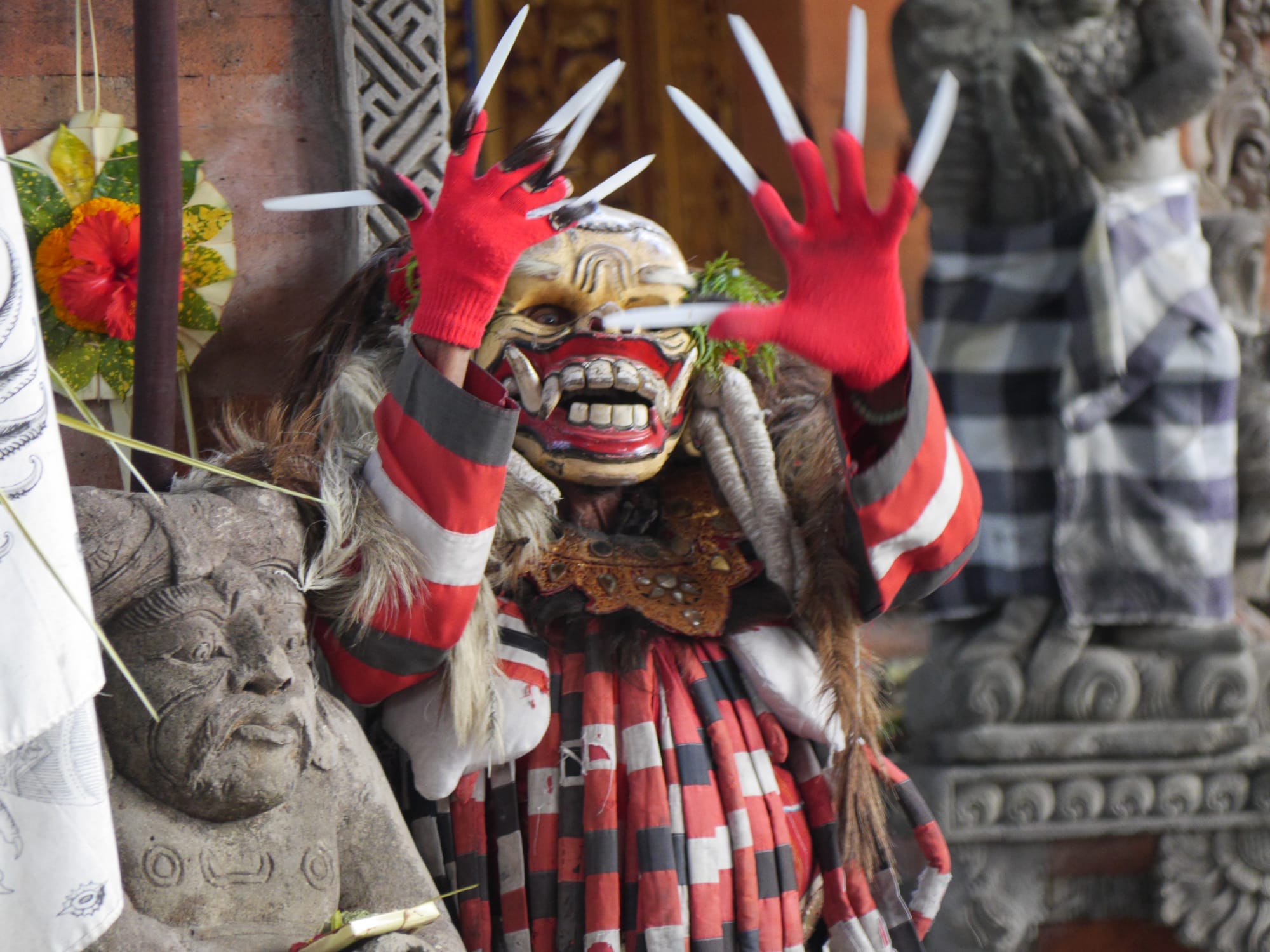
Finally, Sahadewa ends ups tied to a tree in the forest.
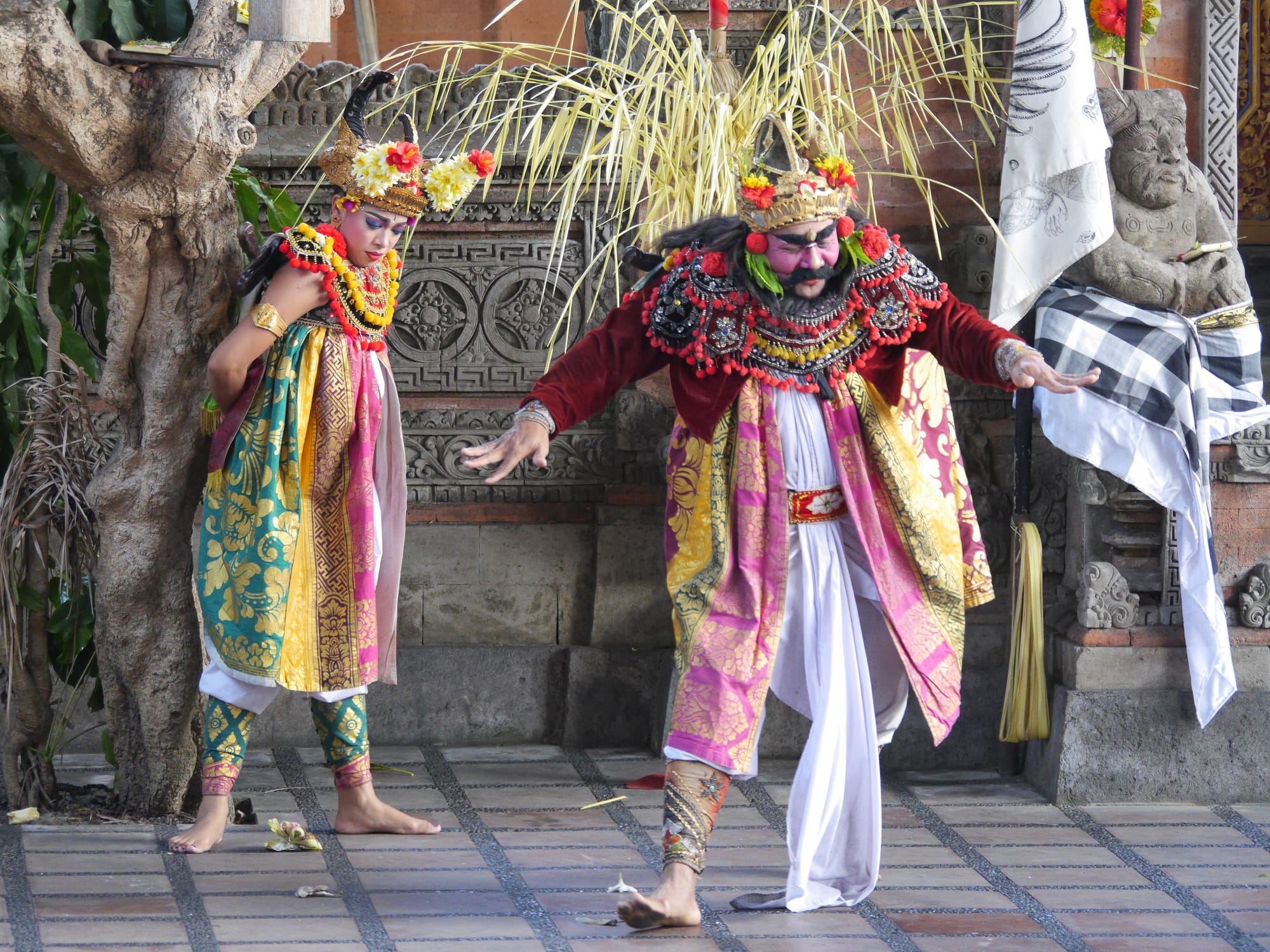
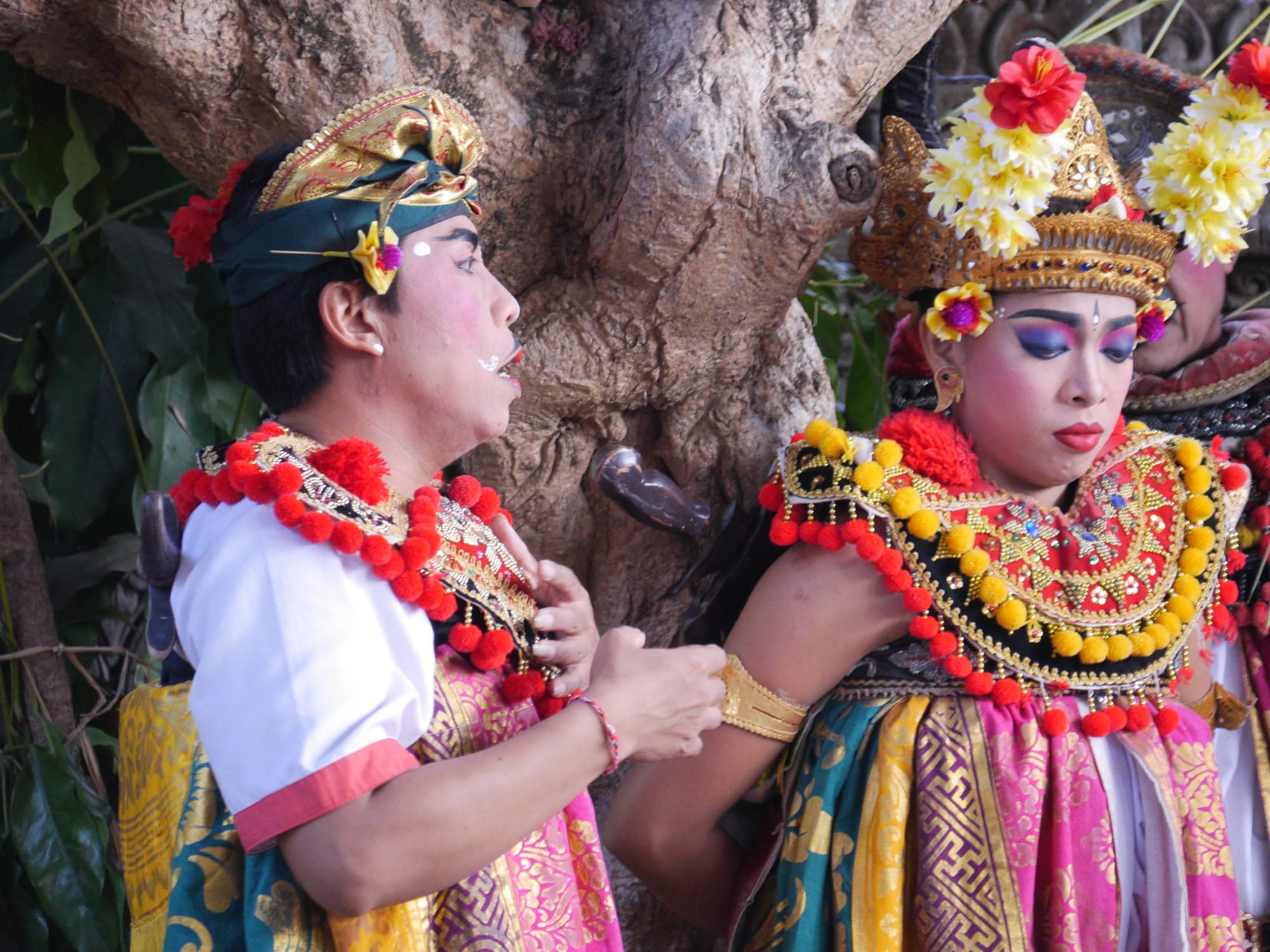
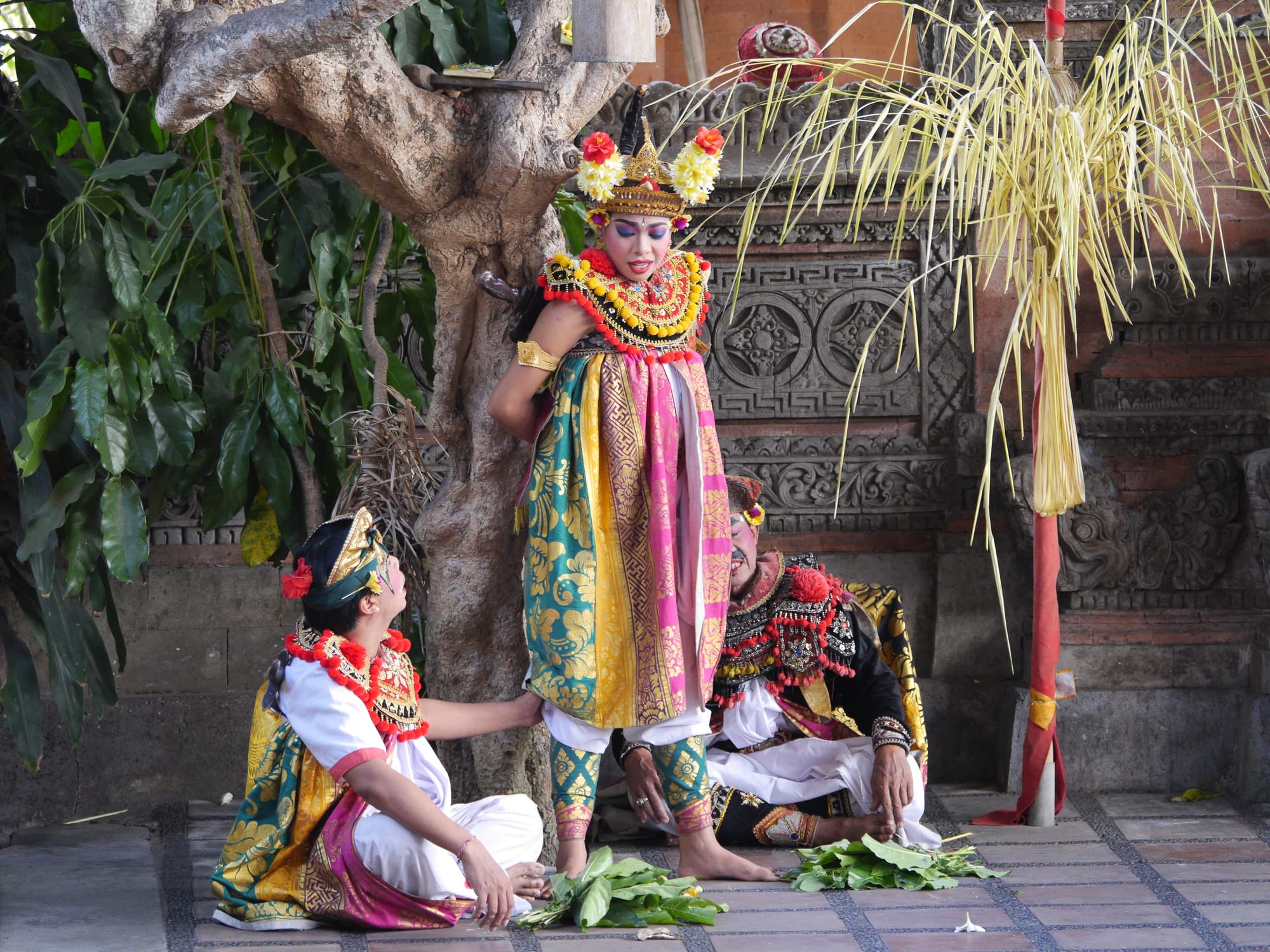
And the play continued.
At this point, Rangda re-enters with two servants (possibly Kalika).
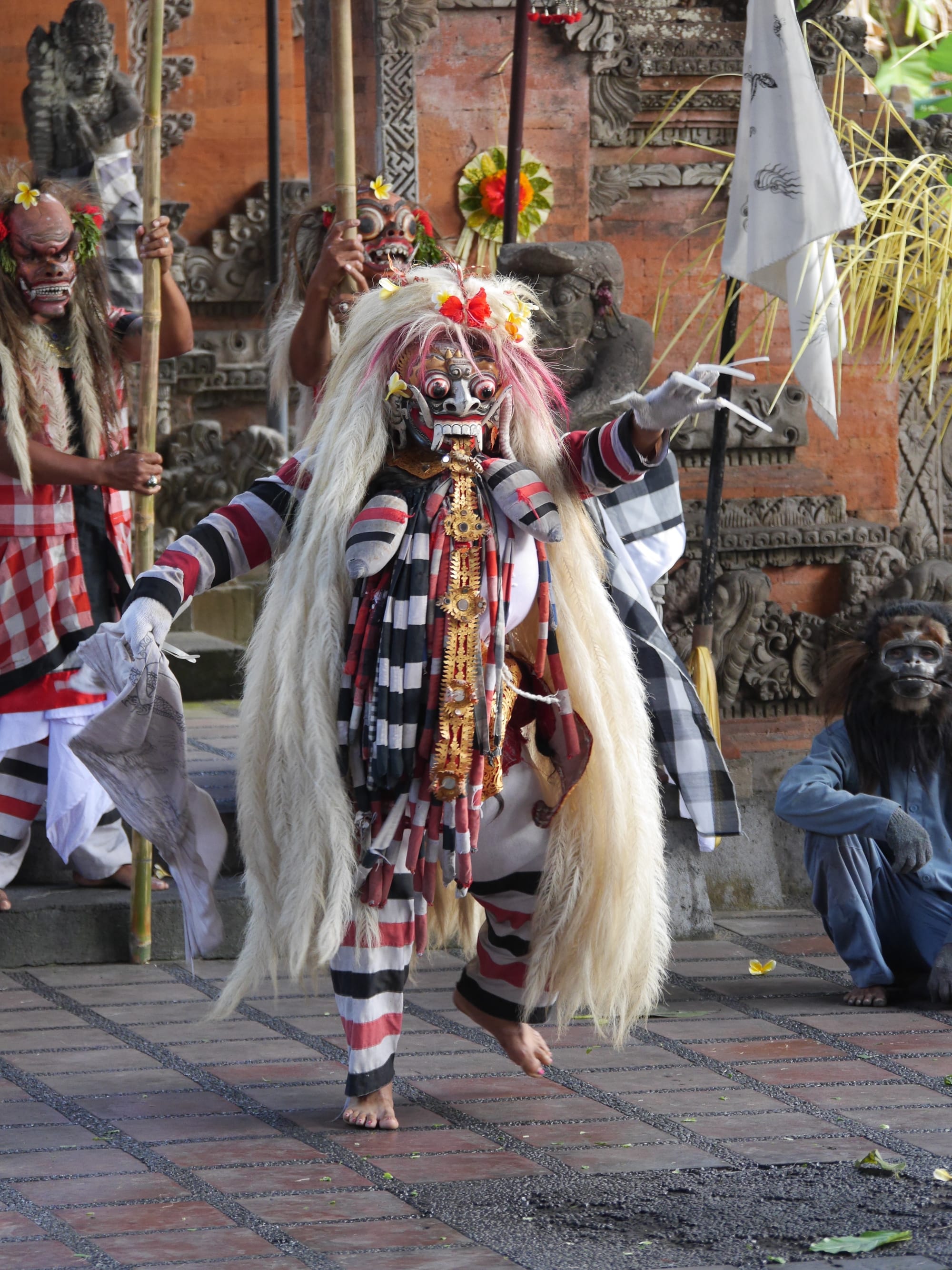
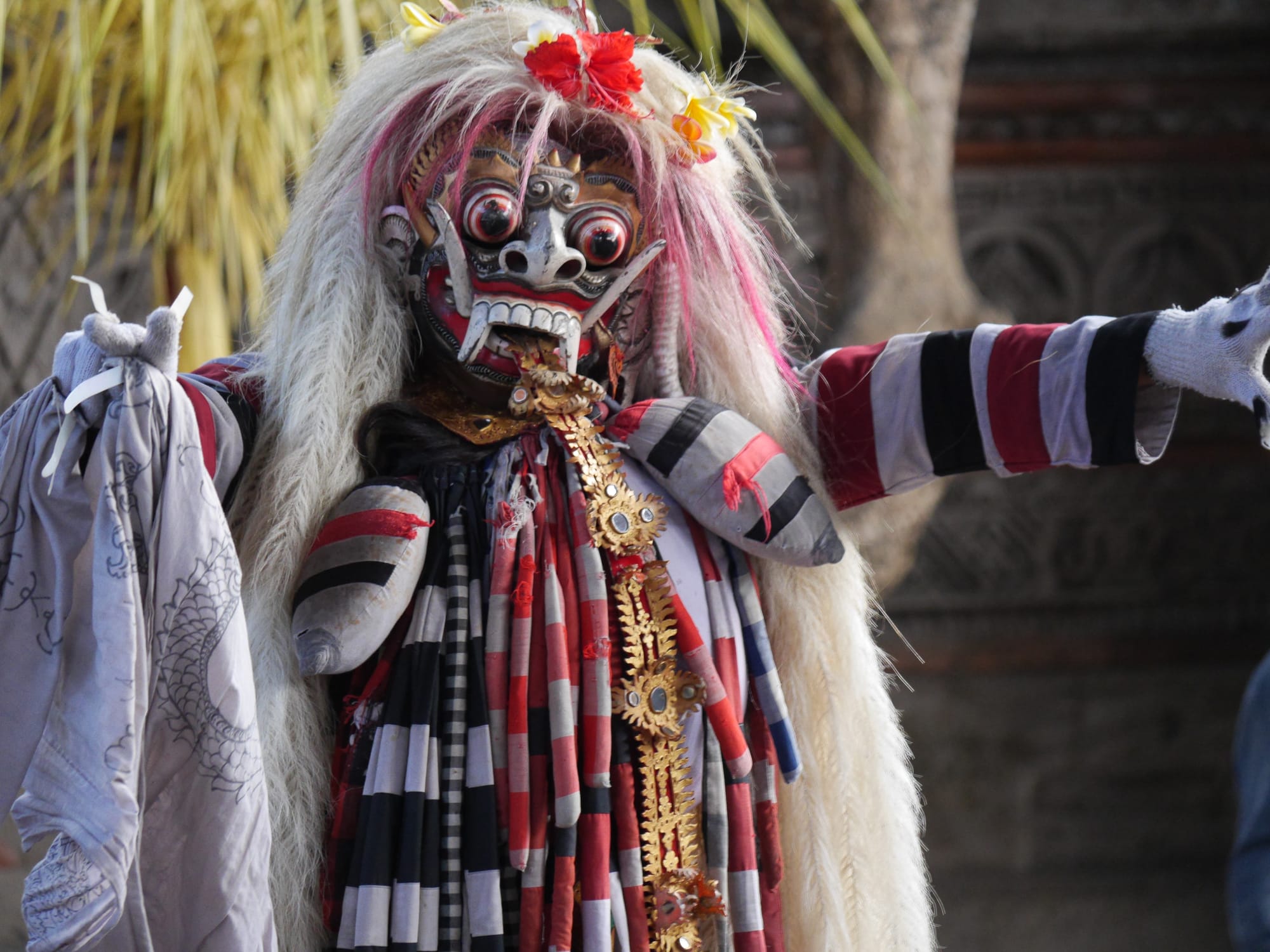
Rangda’s servants don’t look happy.
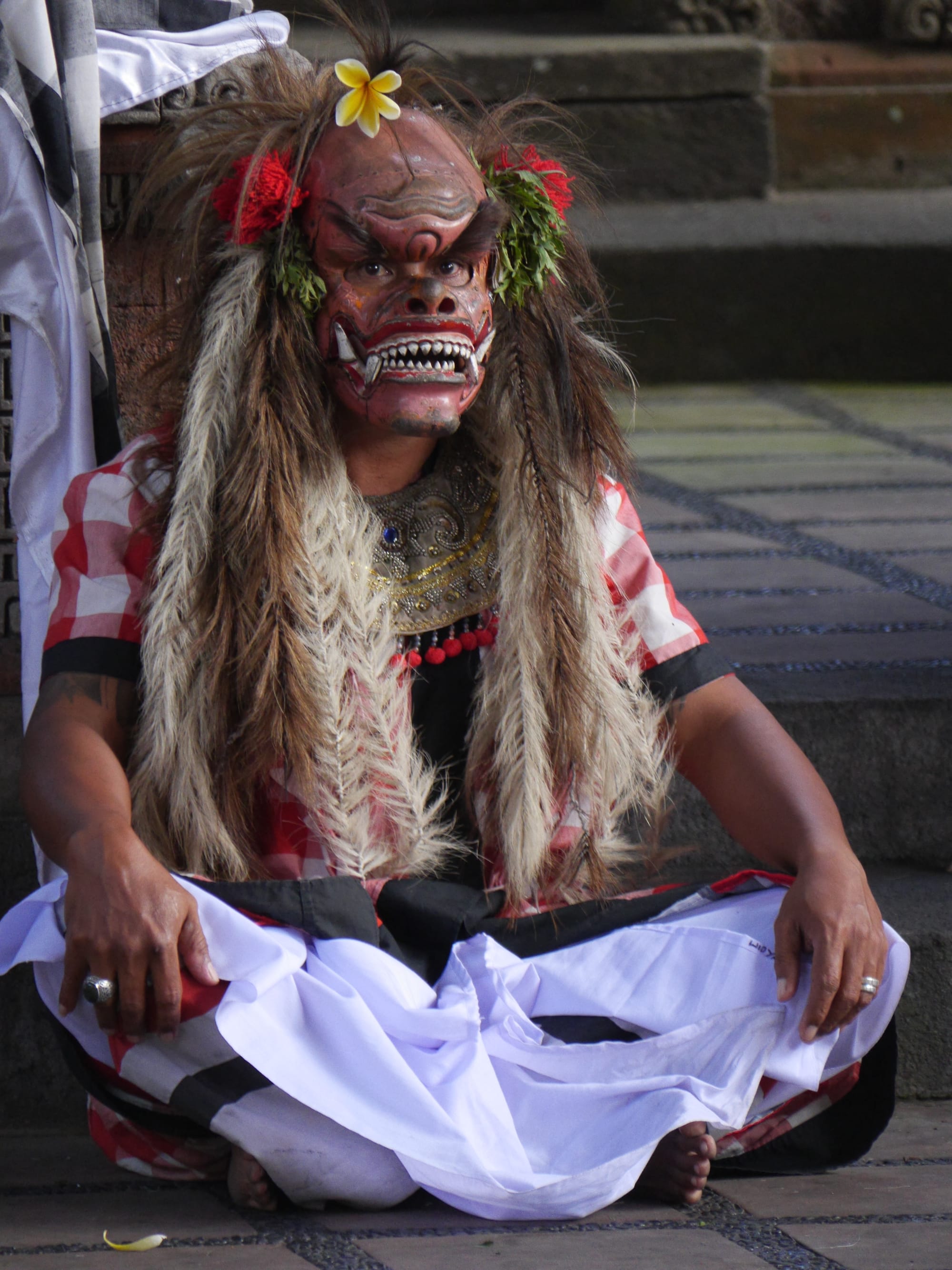
By now, I was baffled and had no idea who the person with the long hair was — possibly the God Siwa.
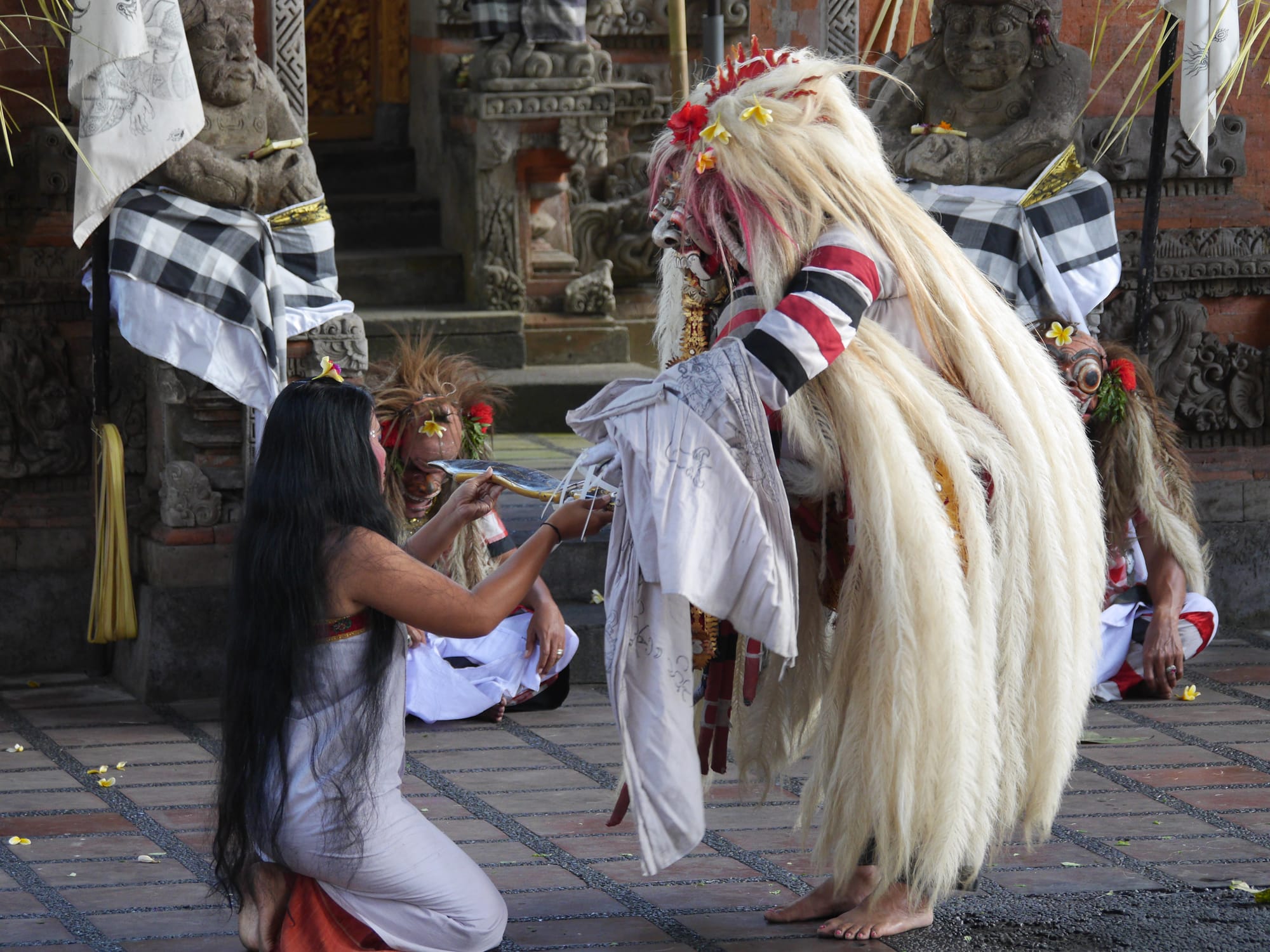
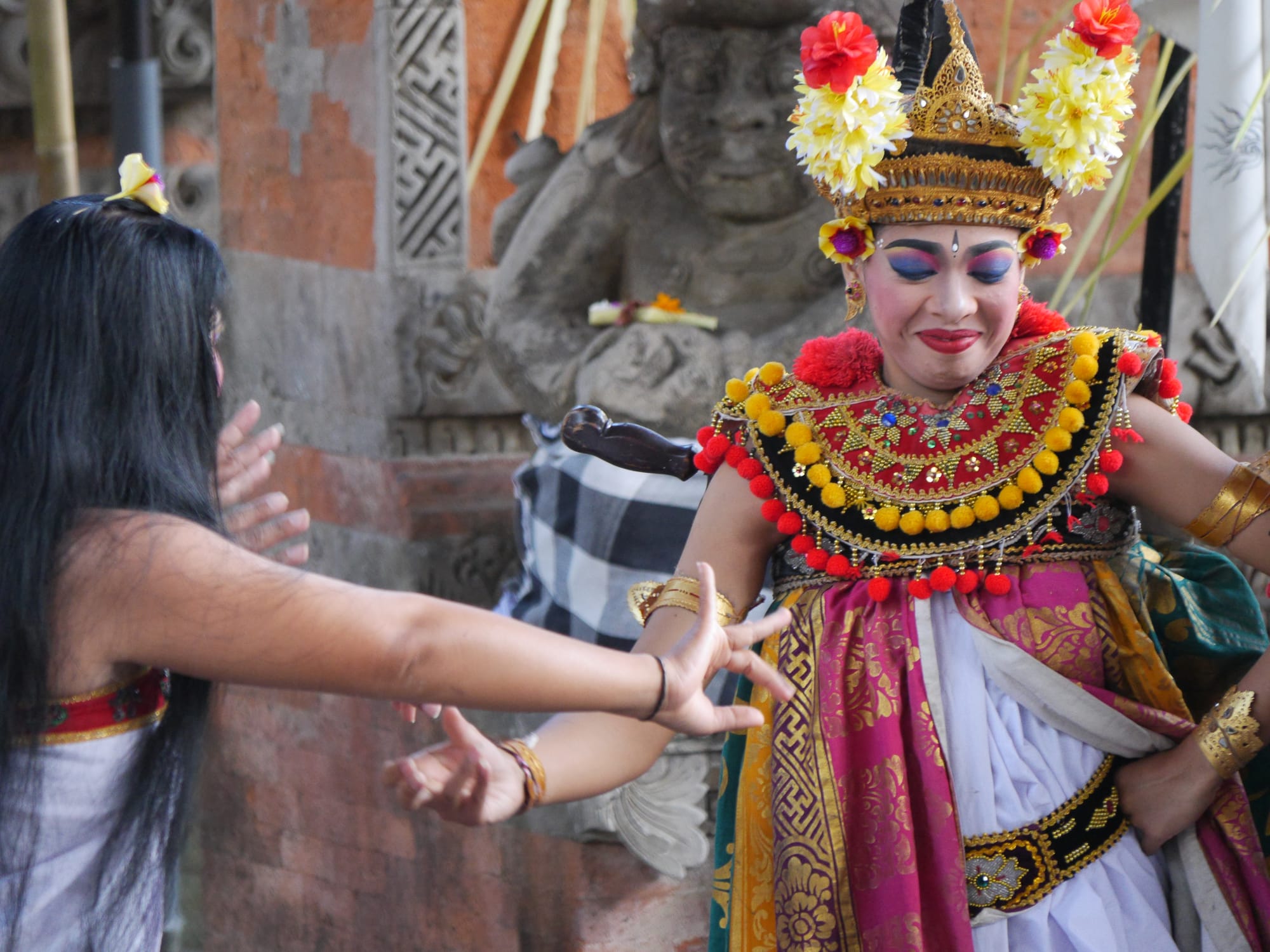
At this point, I think that Kalika, a servant of Rangda, comes to Sahadewa and asks to be killed. However, Sahadewa refuses, and as a result, Kalika turns into a boar and attacks Sahadewa. She is defeated and then becomes a bird, which Sahadewa also defeats. And below is the bird entering the stage.
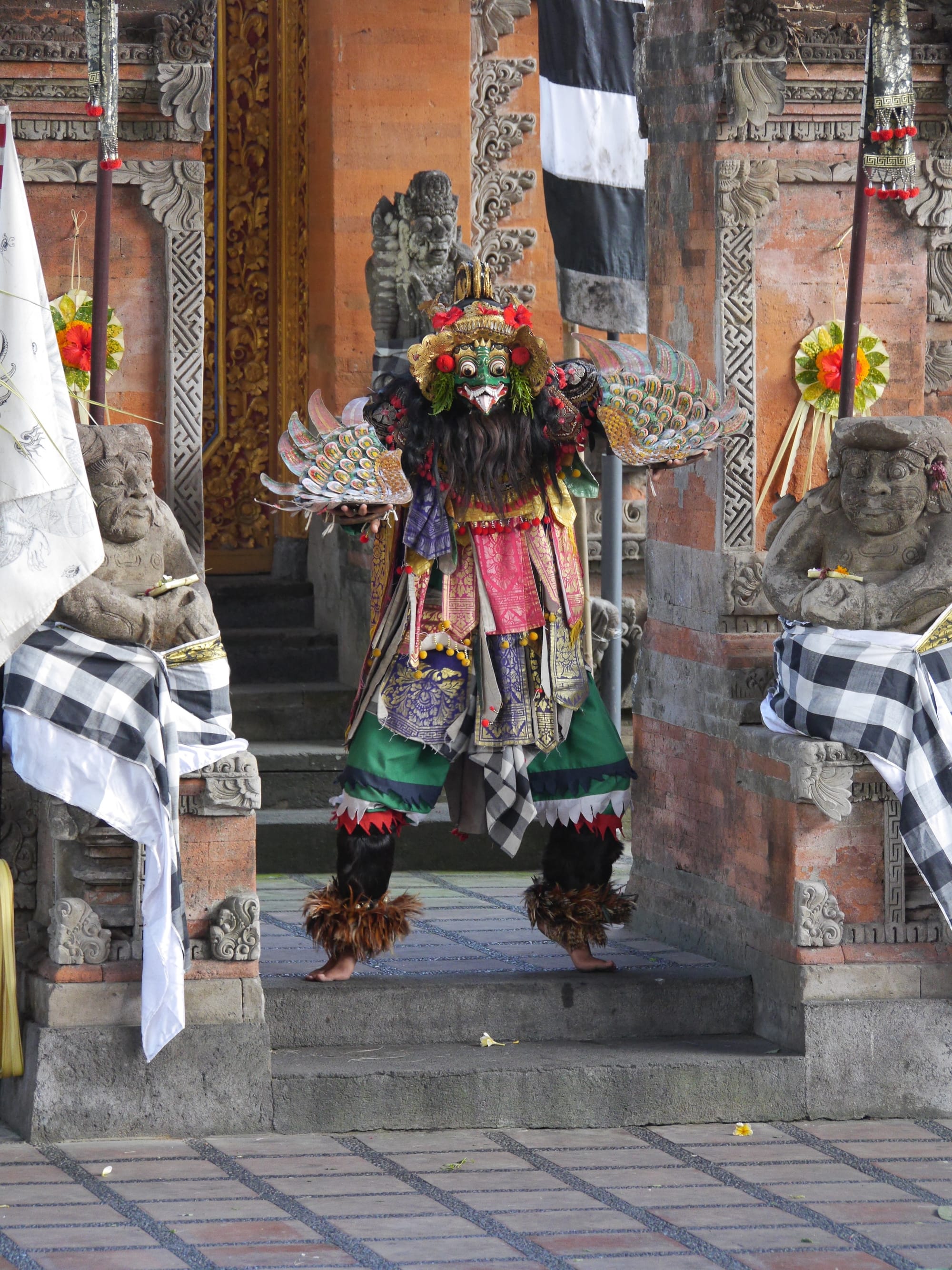
Finally, the supporters of Barong appear and help him fight Rangda. However, Rangda uses powerful magic on them, which causes them to stab themselves.
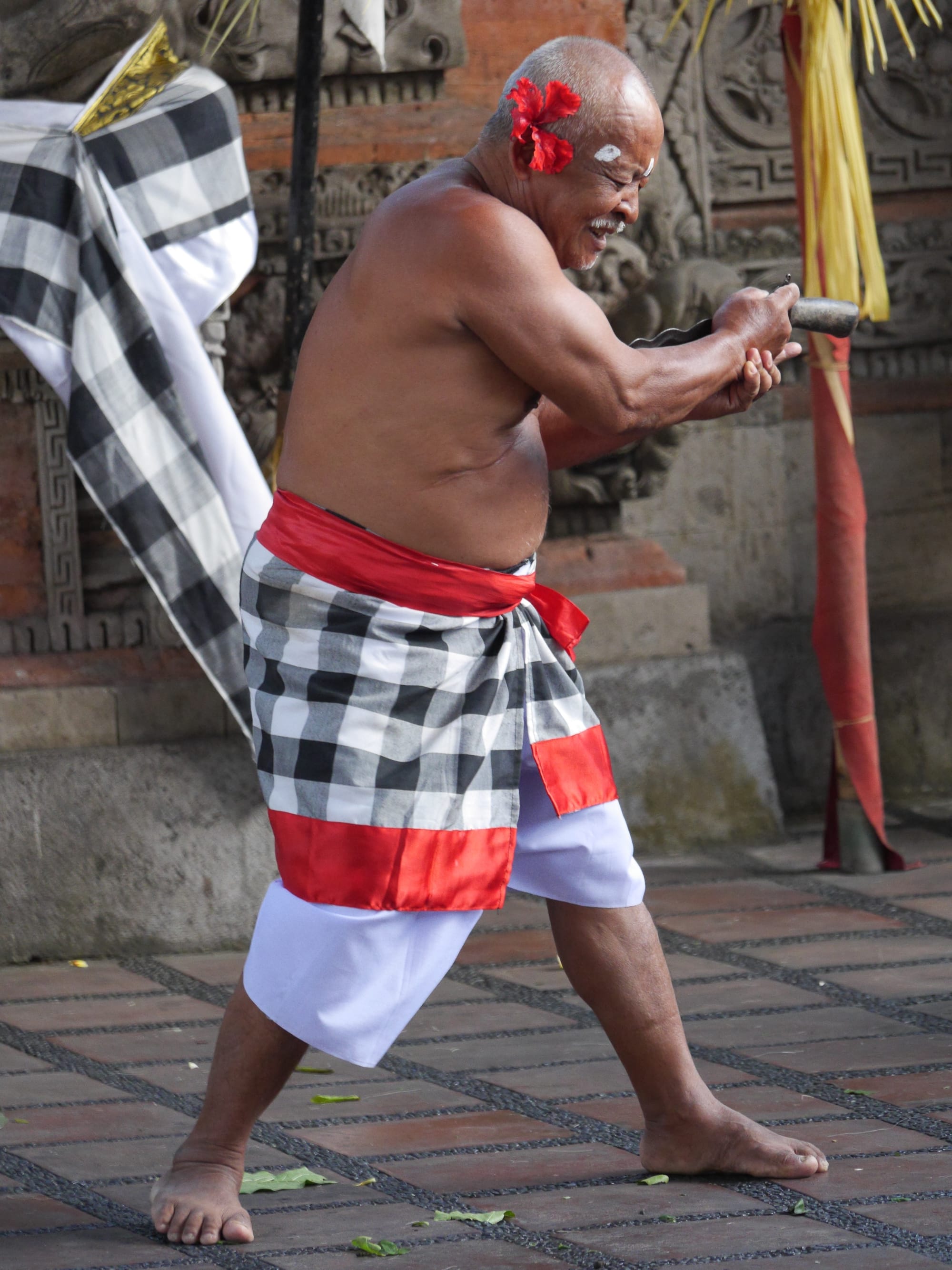
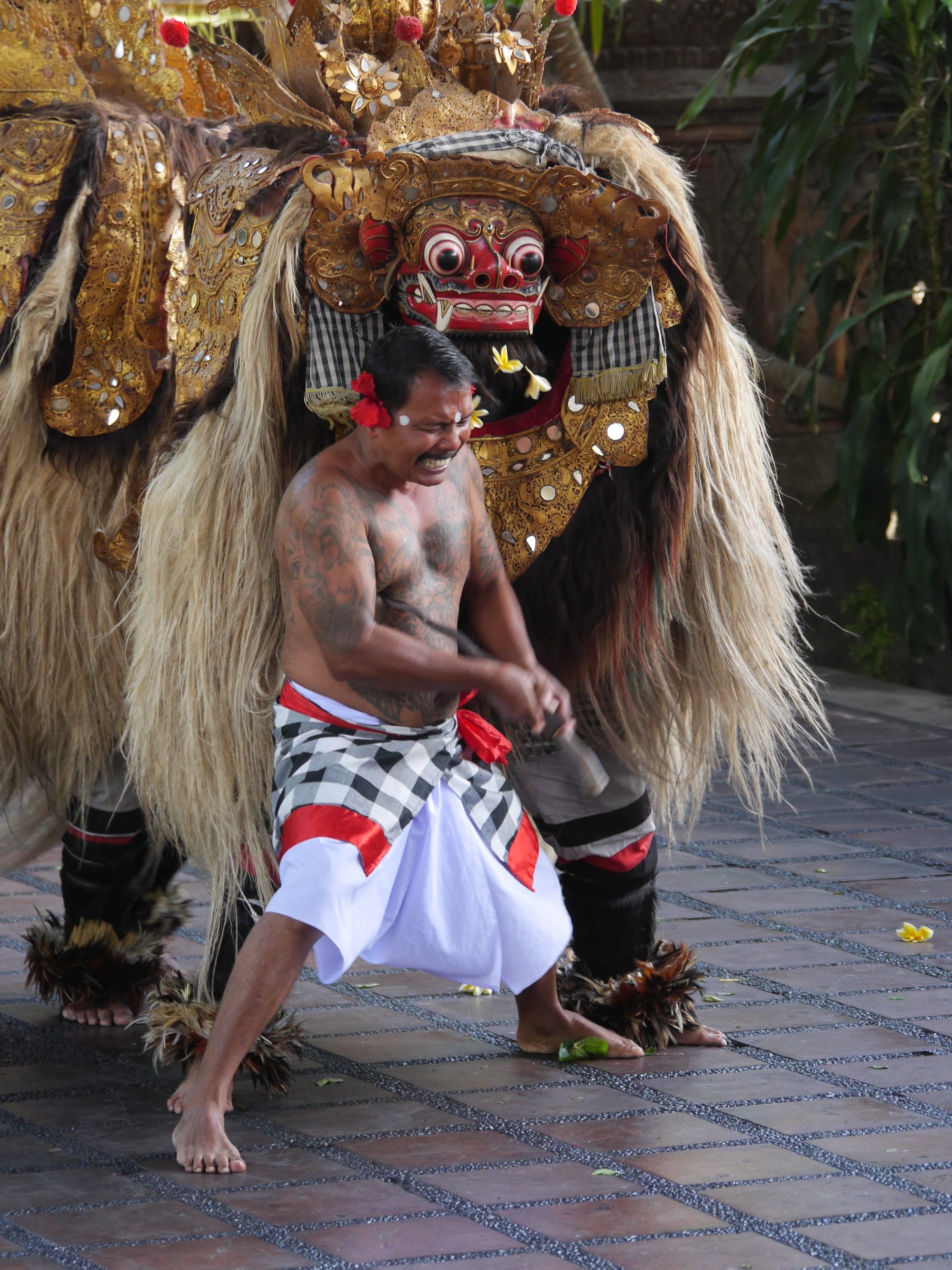
And then the performance ended. I am not sure why because, as far as I could tell, nothing had been resolved between the Barong and Rangda.
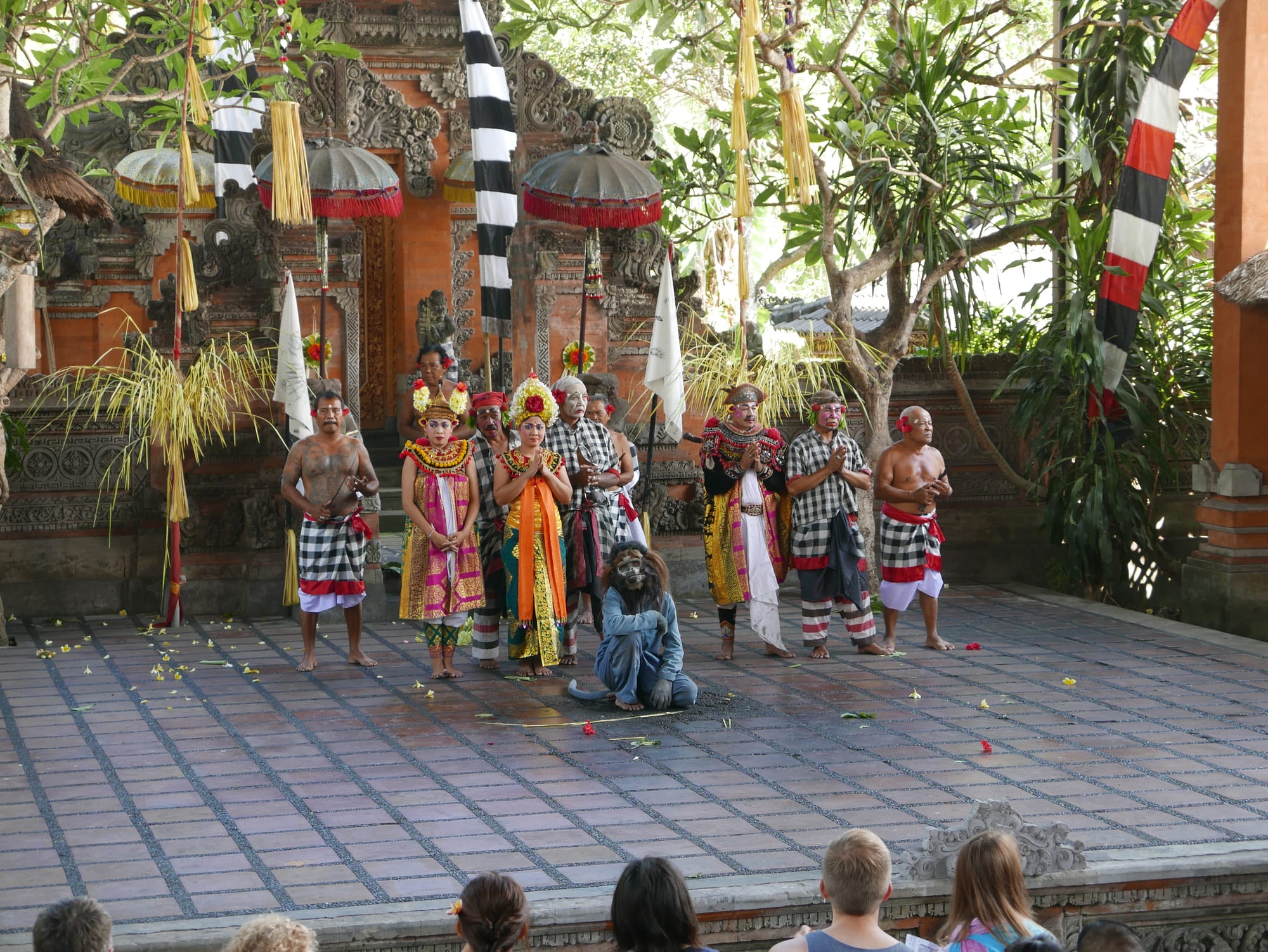
The whole performance was accompanied by music.
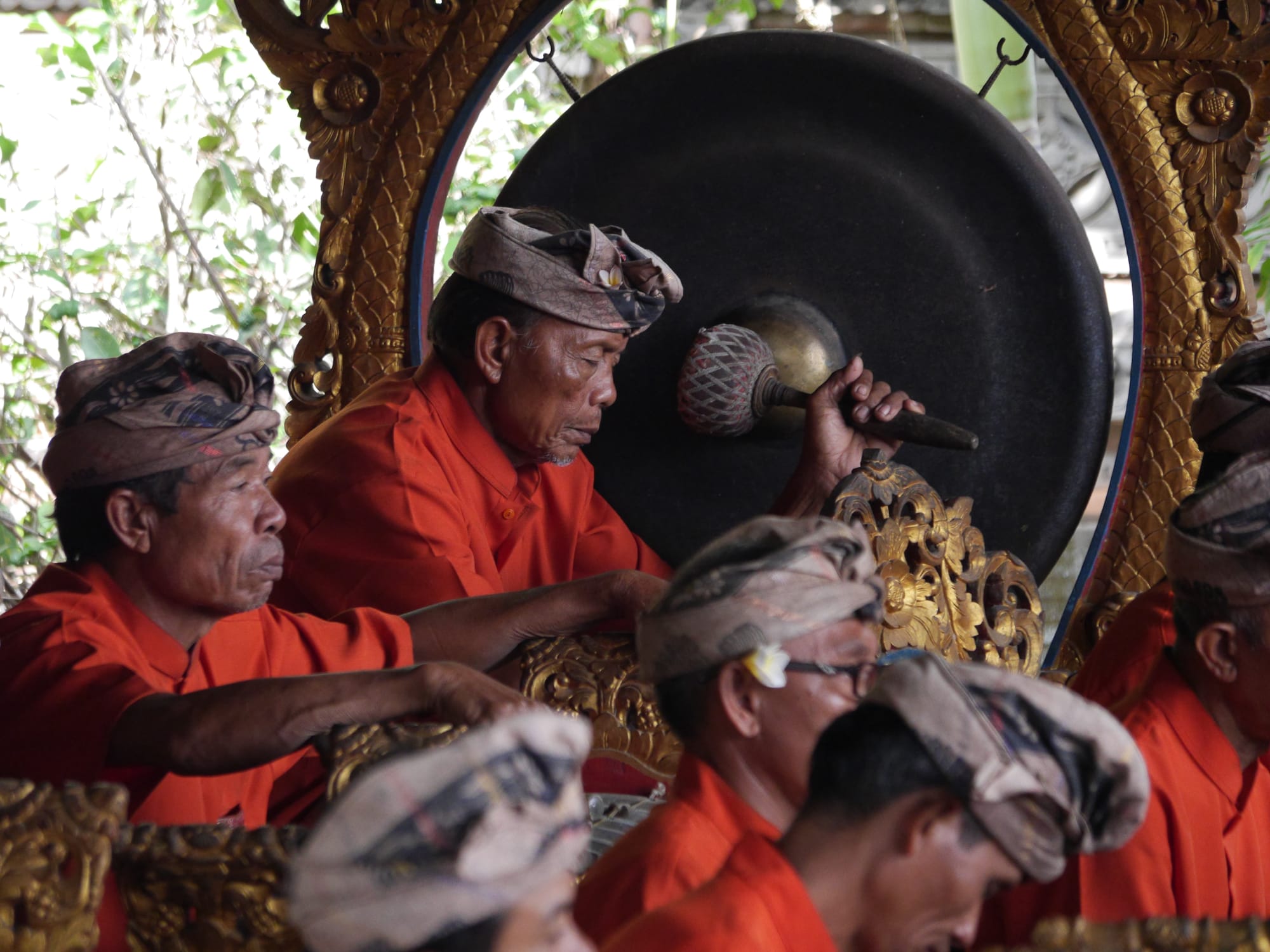
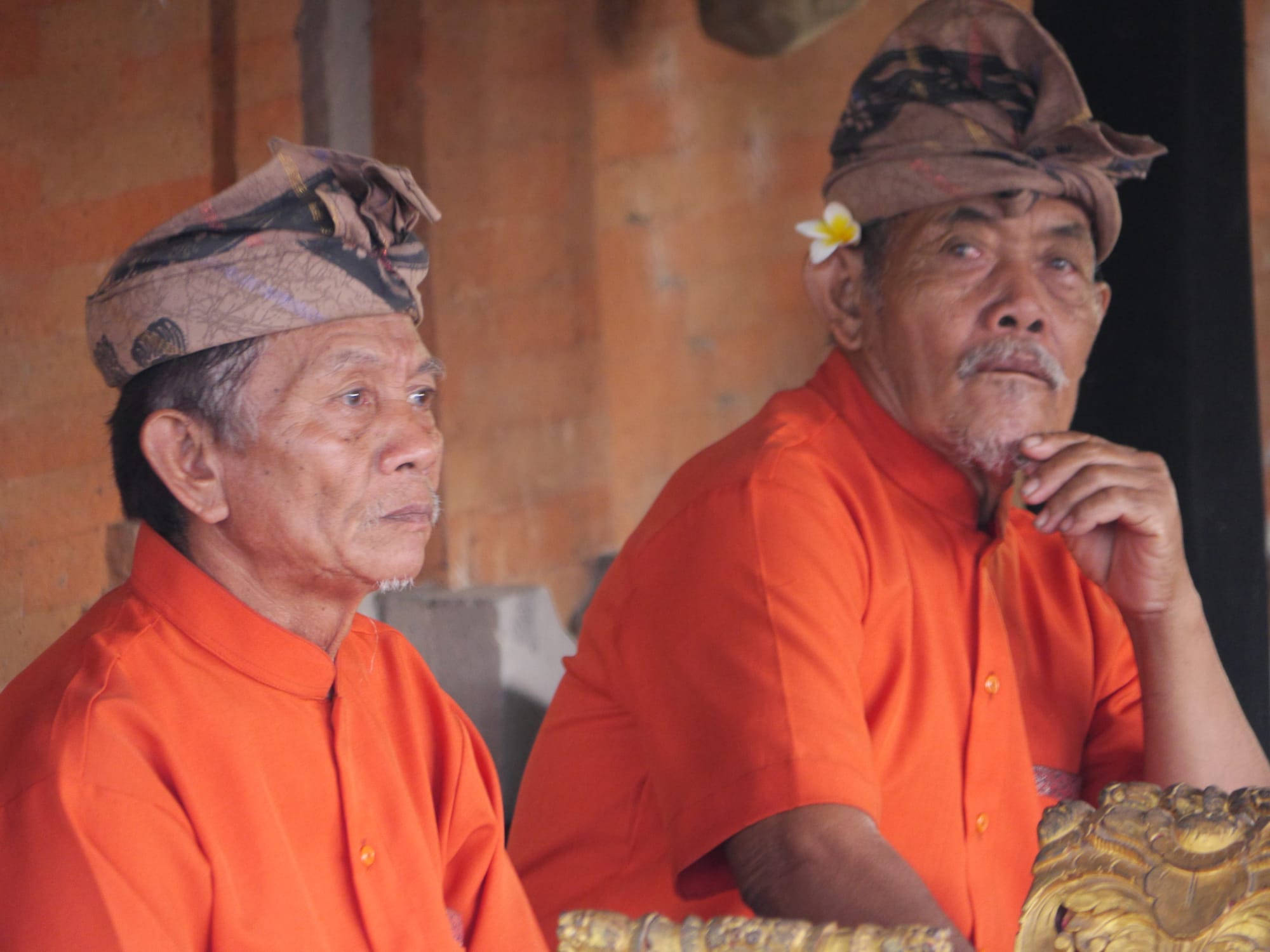
And the music was played on some real ornate instruments.
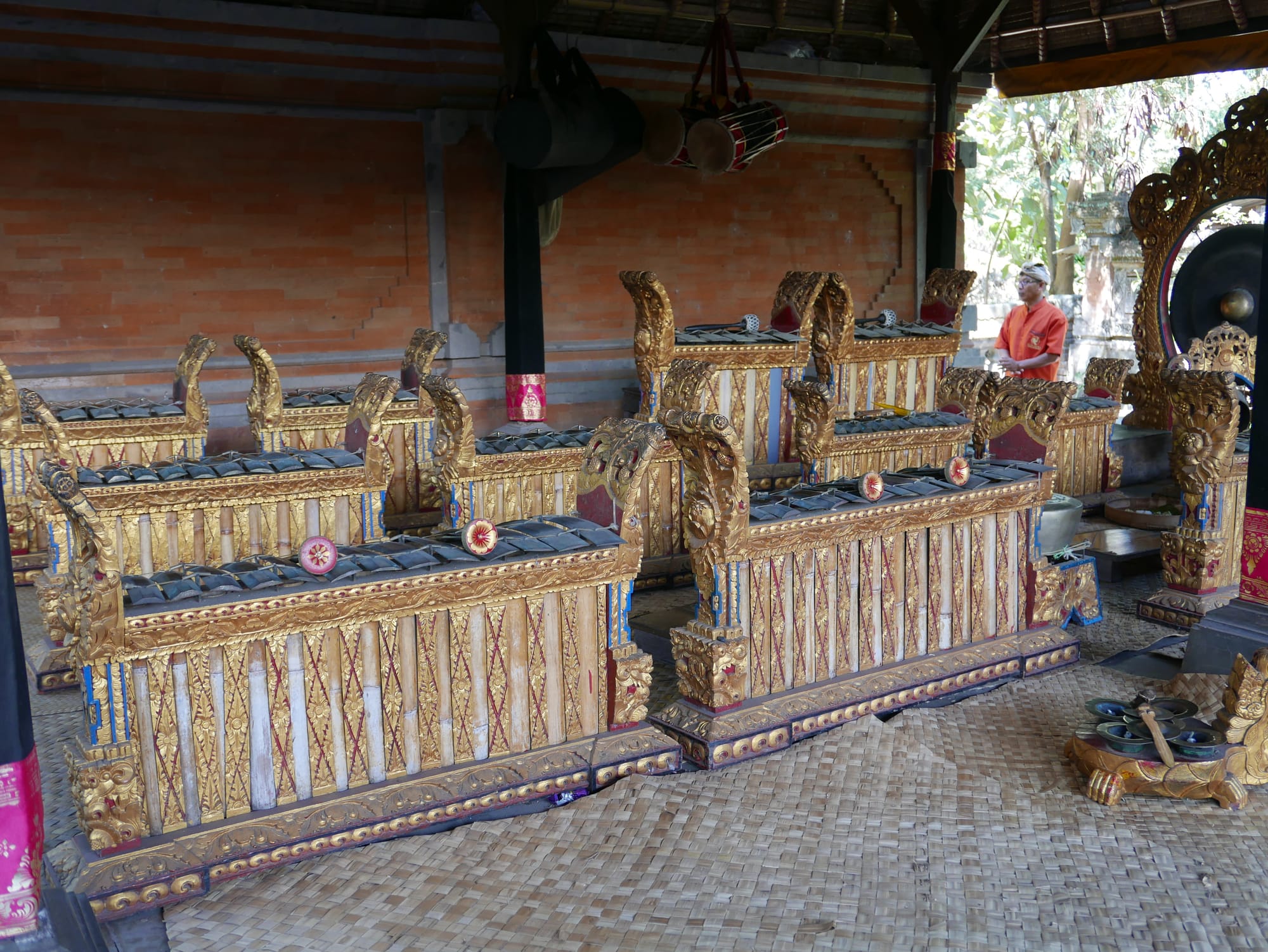
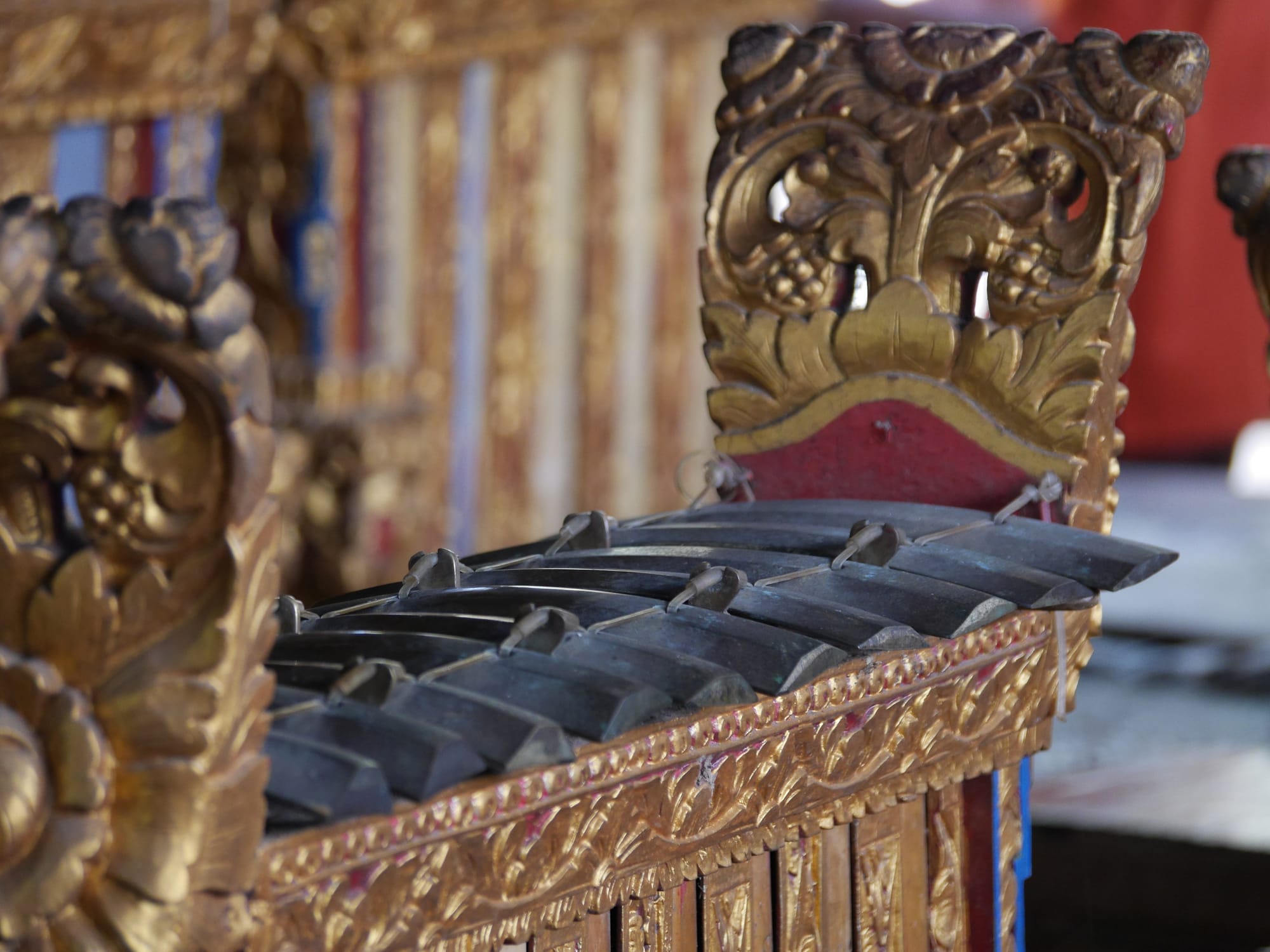
Overall, I understood around 20% of what happened on stage. I found the entire thing to be perplexing but, at the same time, fascinating. The costumes were stunning, and the actors took pride in their appearance and work. Bottom line, yes, I enjoyed it and thought it was worth the price to experience something genuinely Balinese.
FourSquare: Sahadewa Barong And Kris Dance
